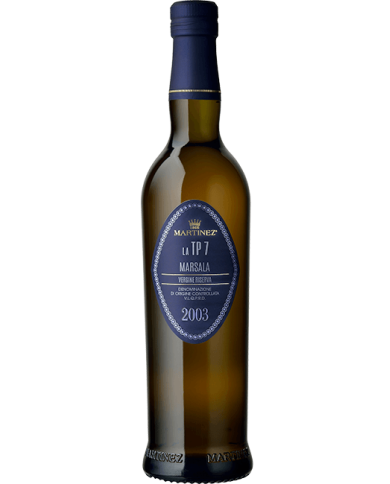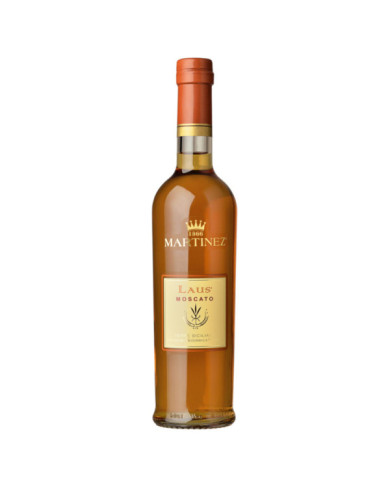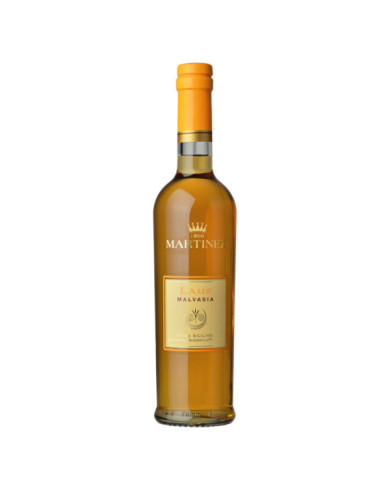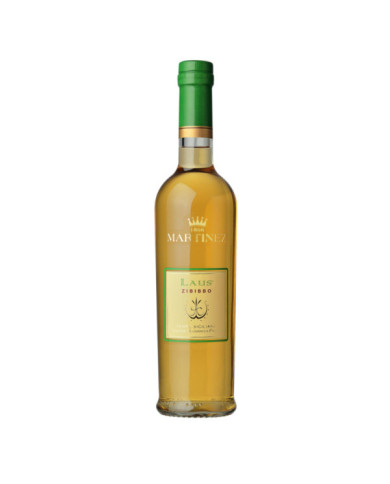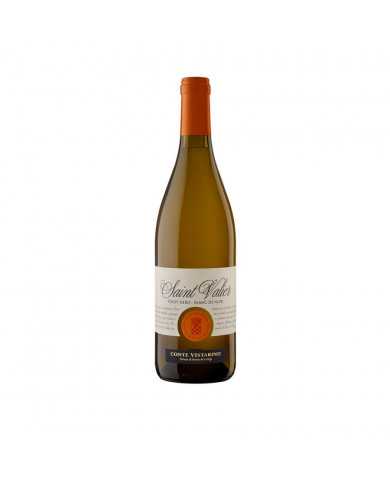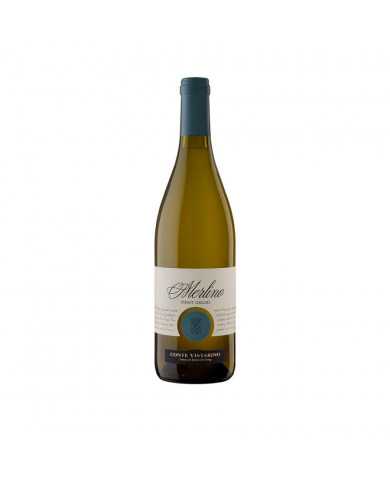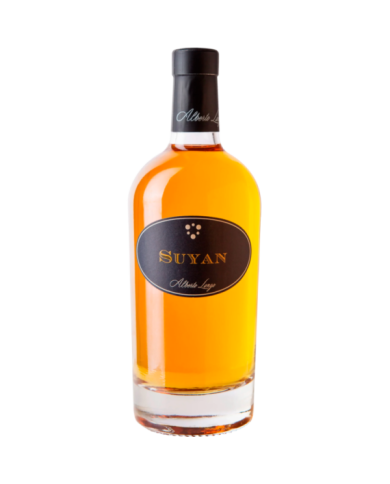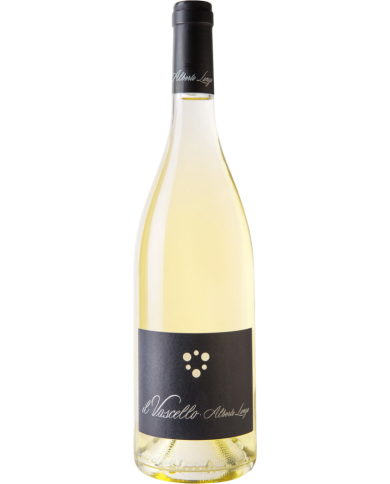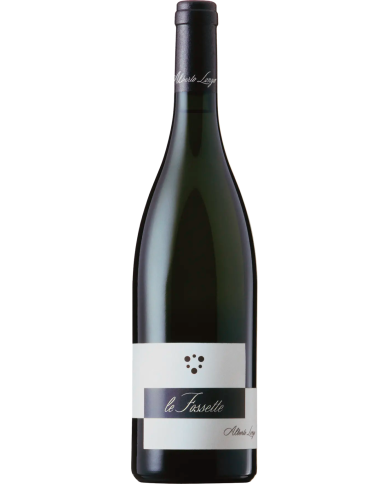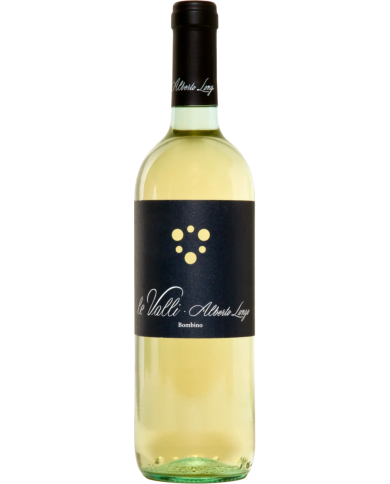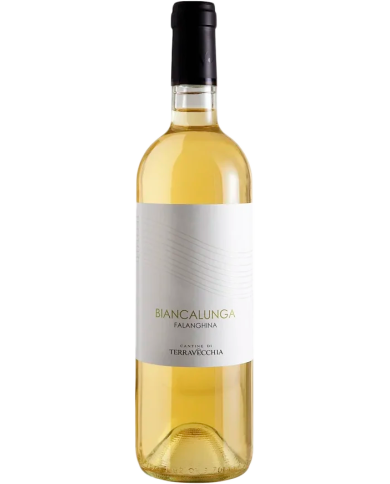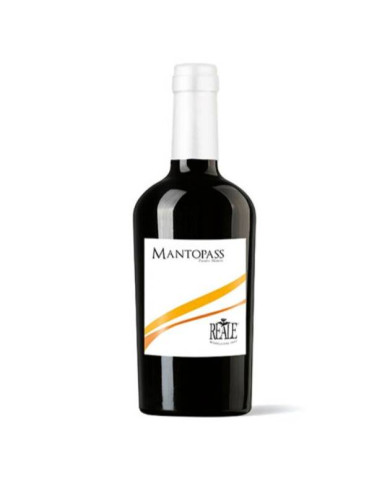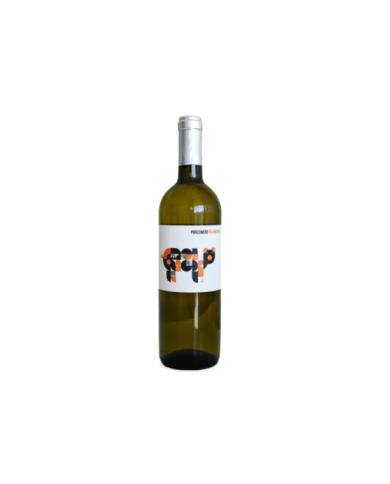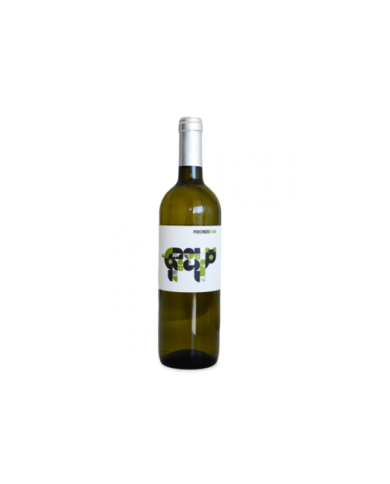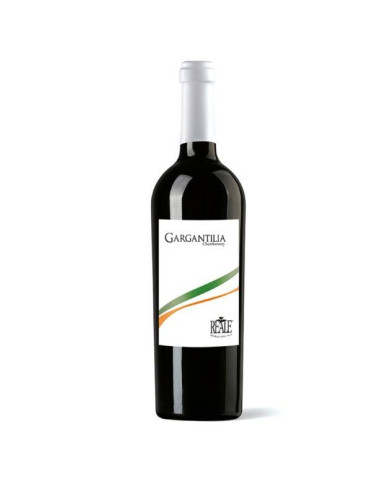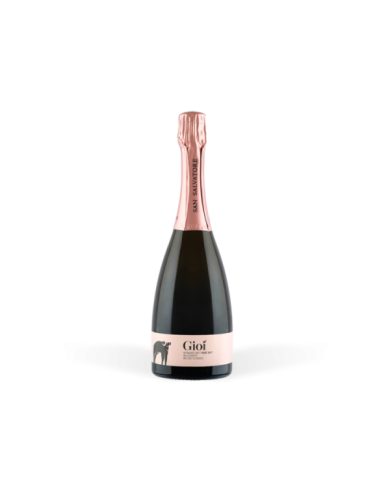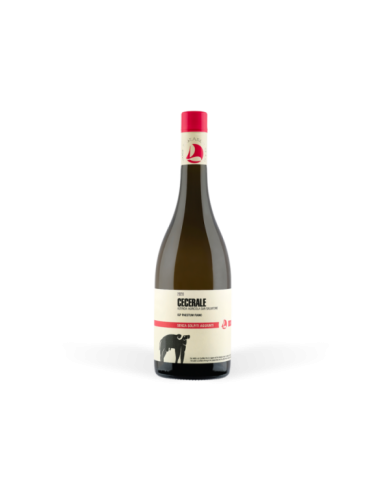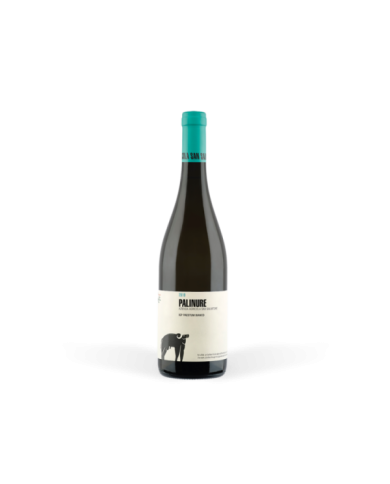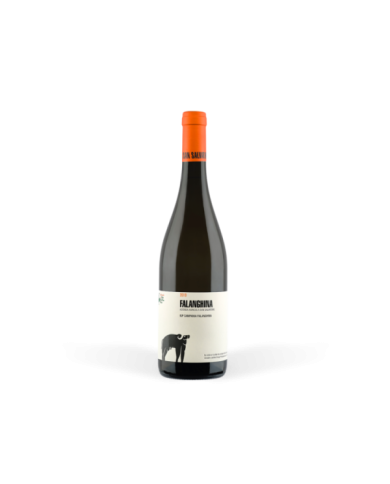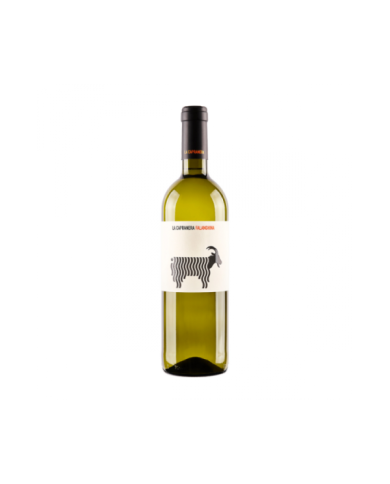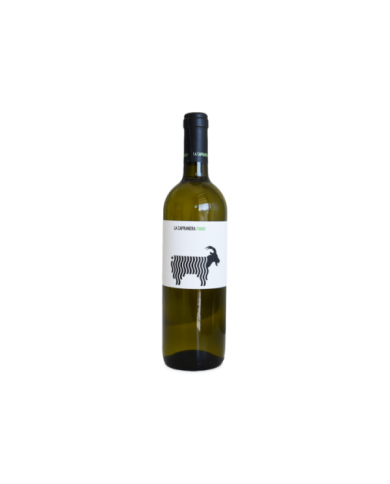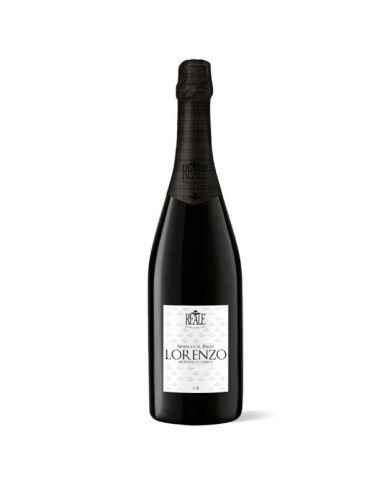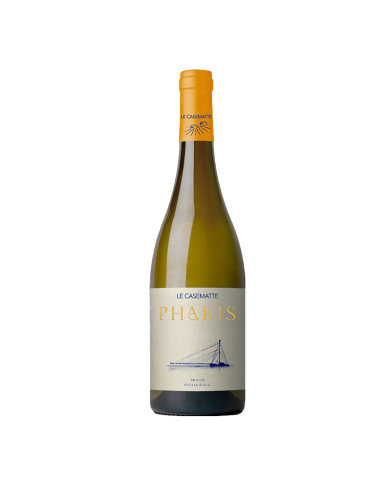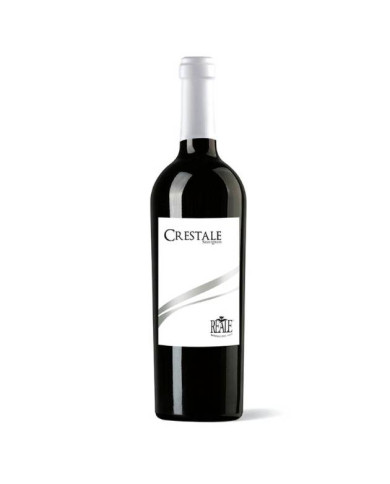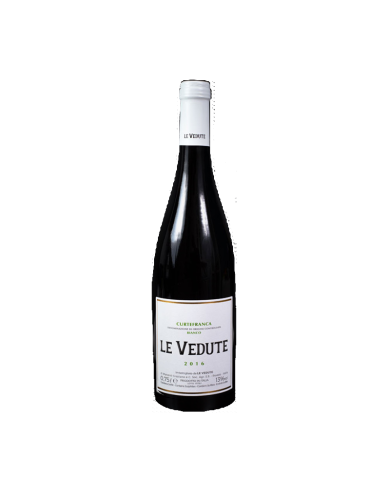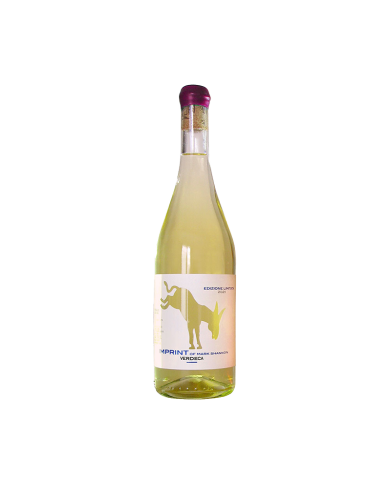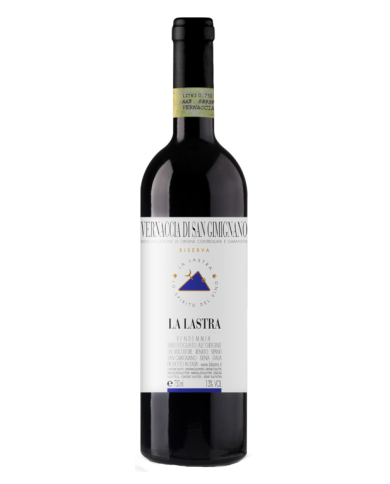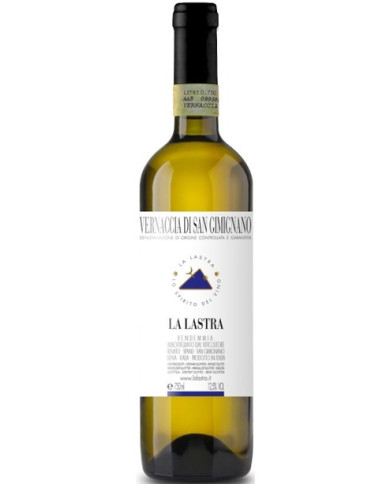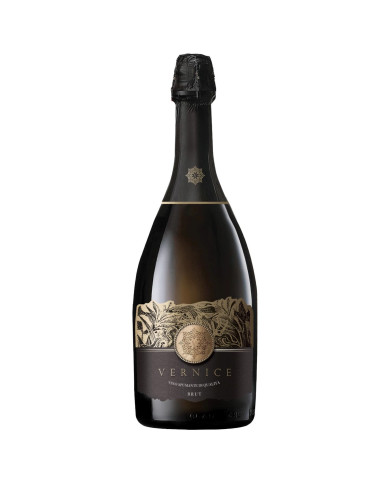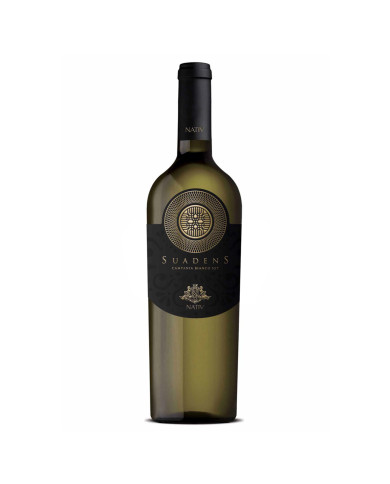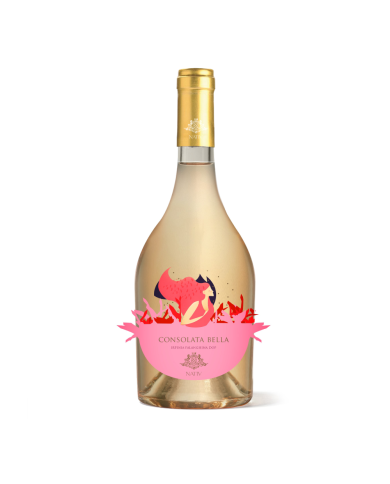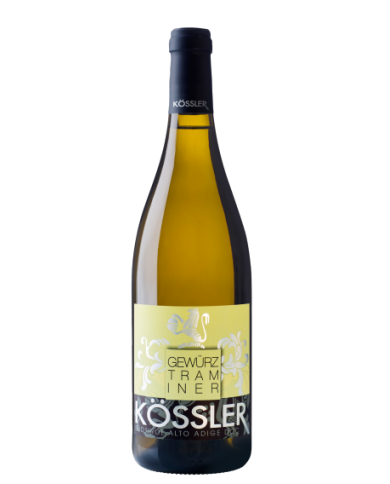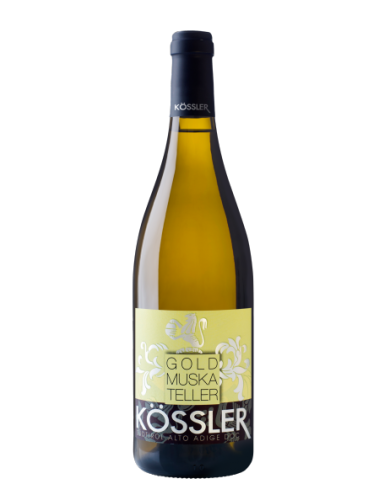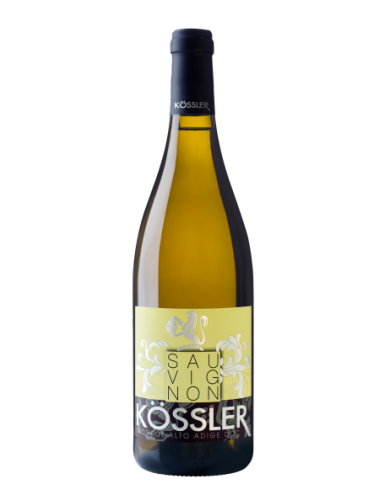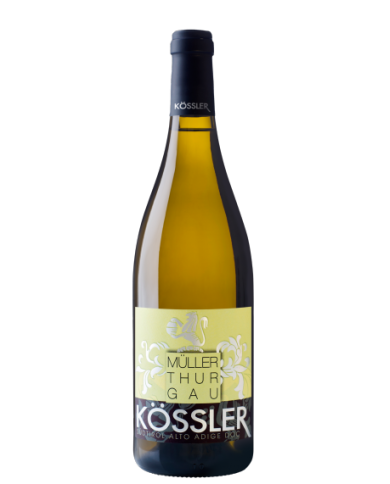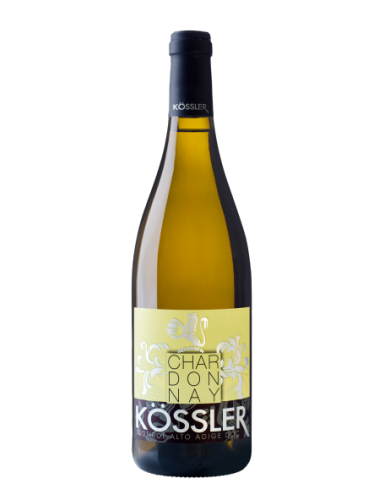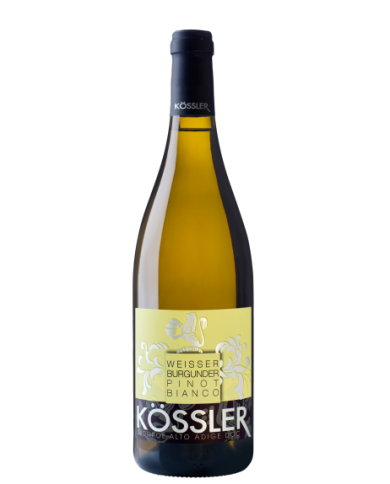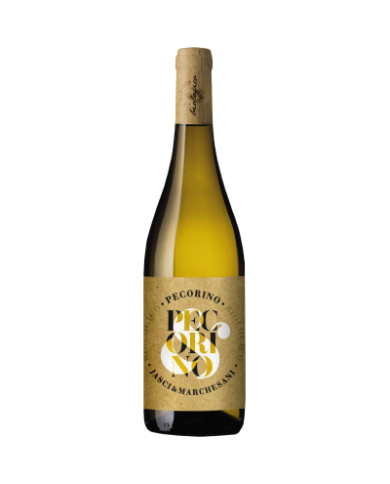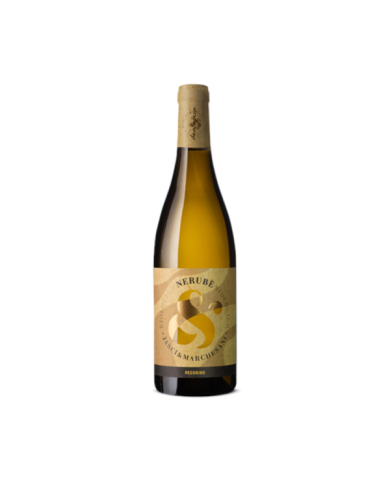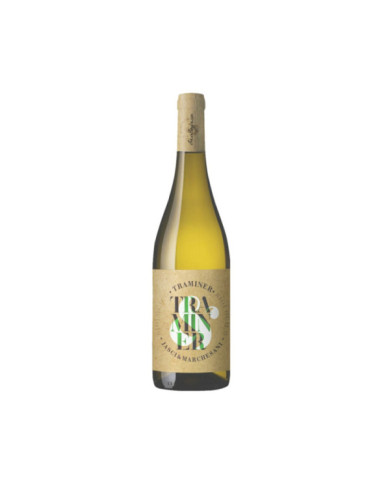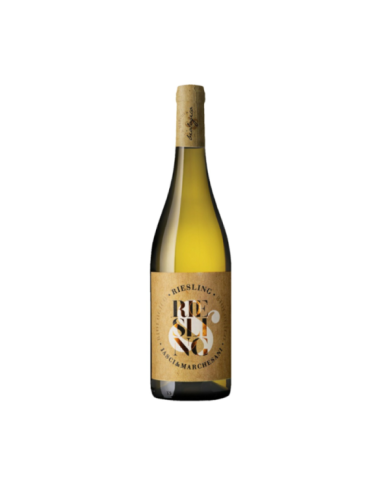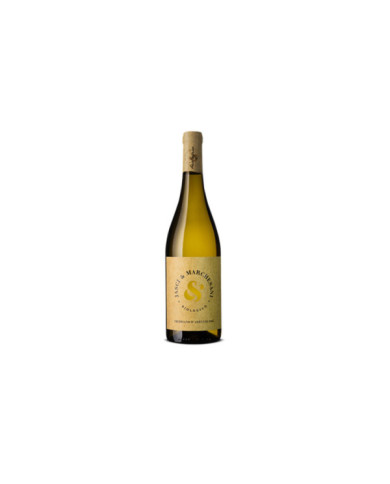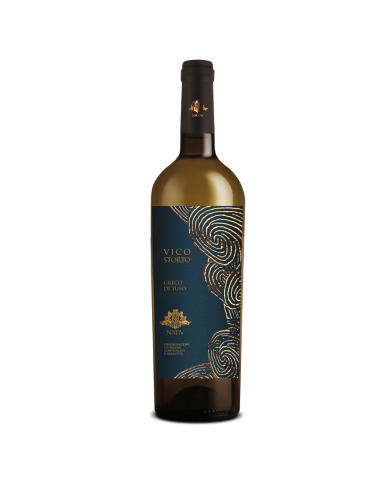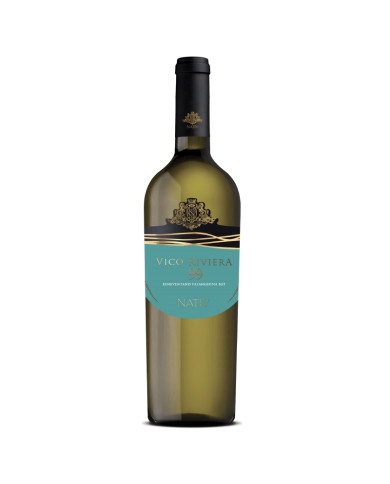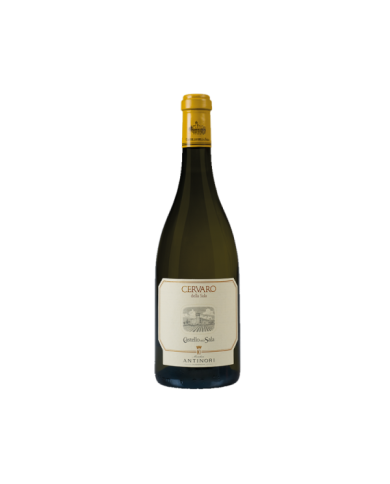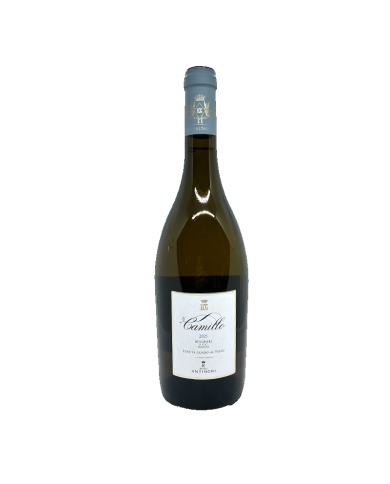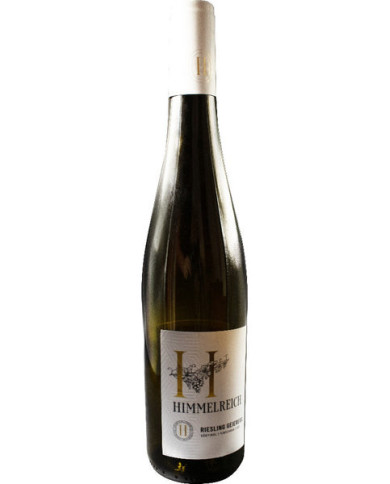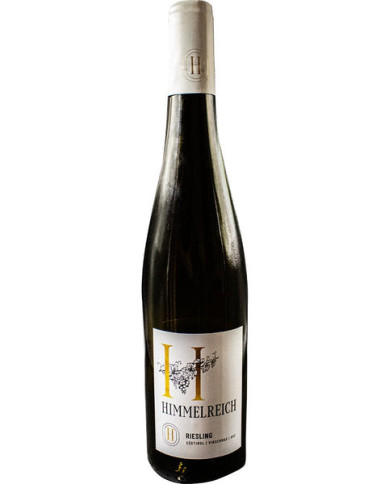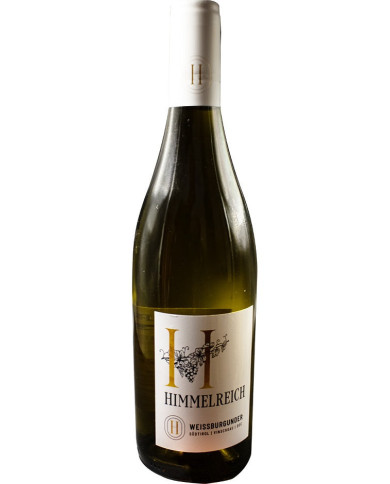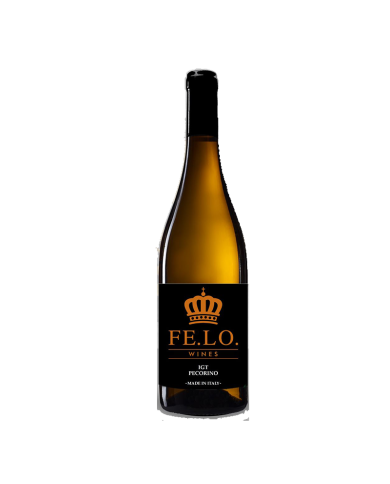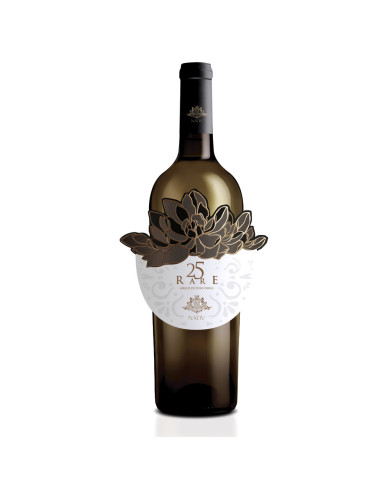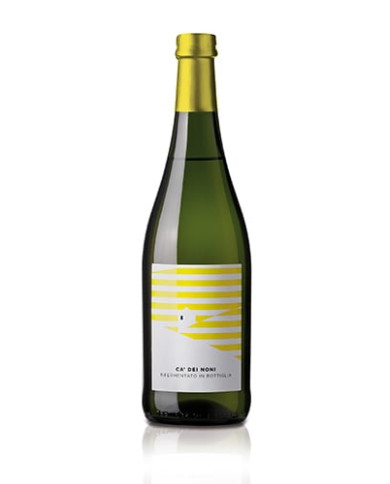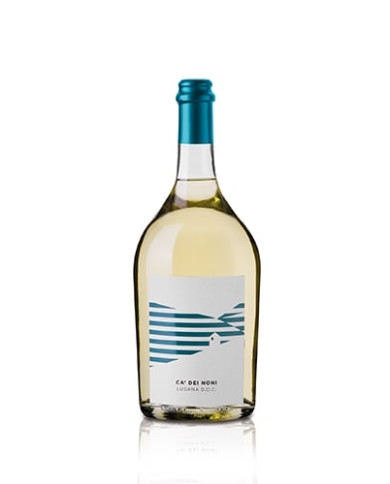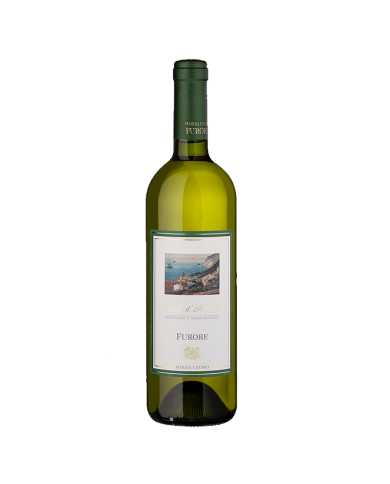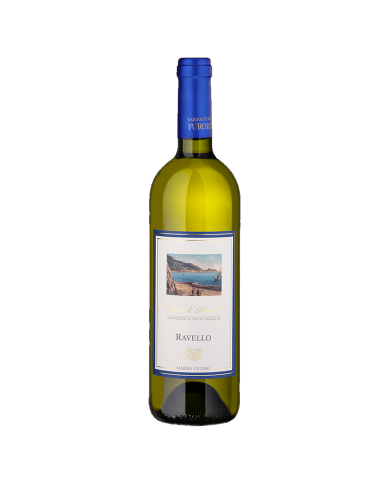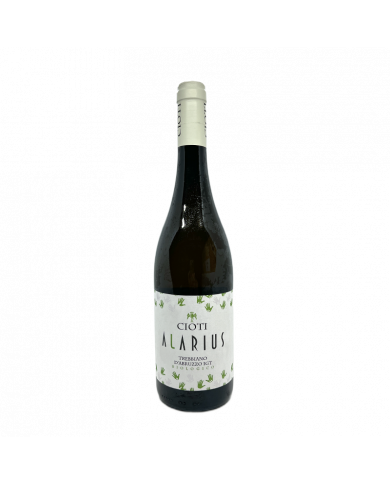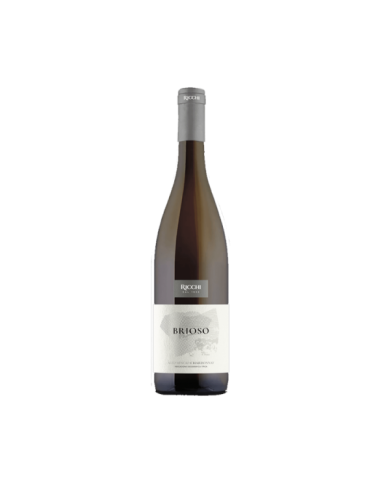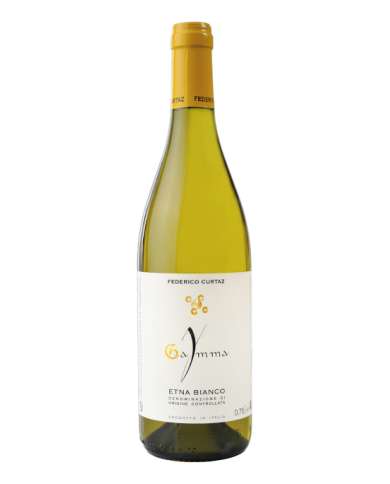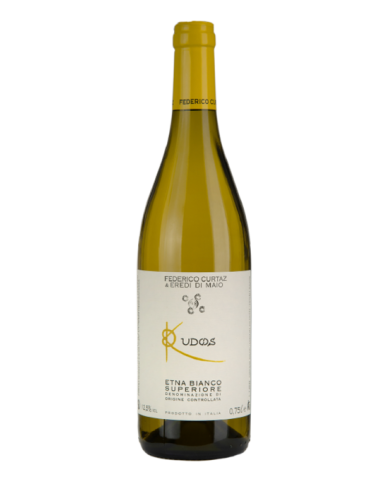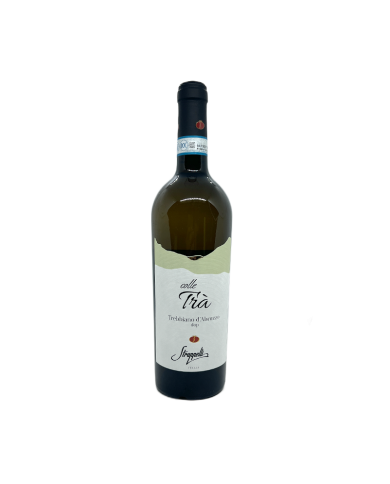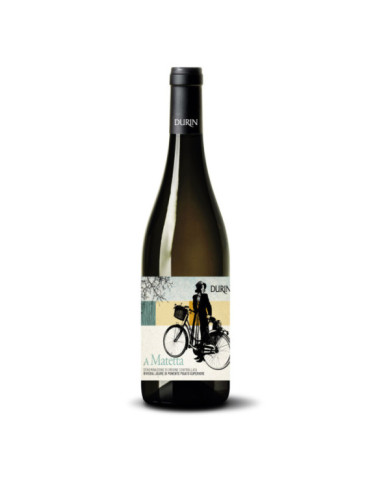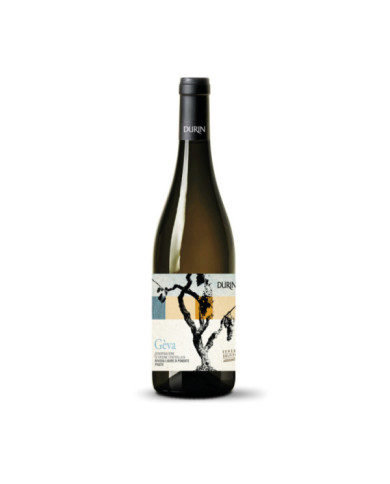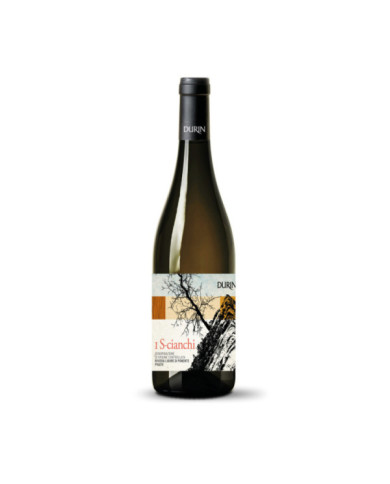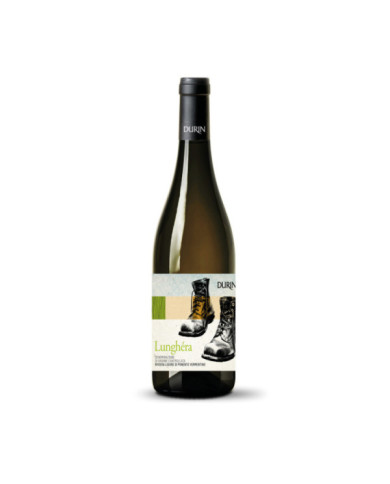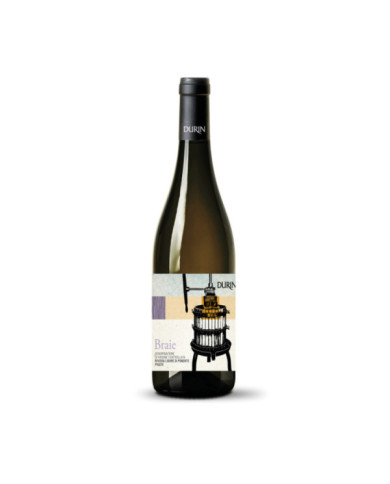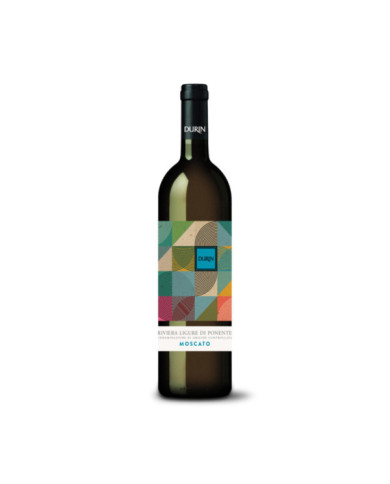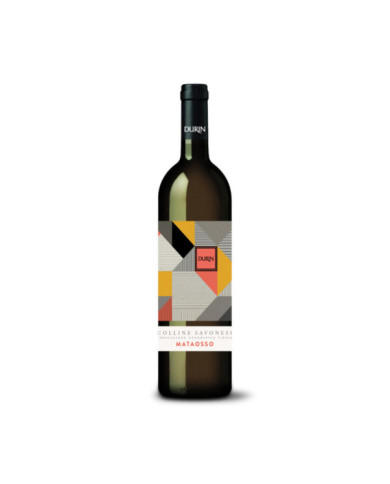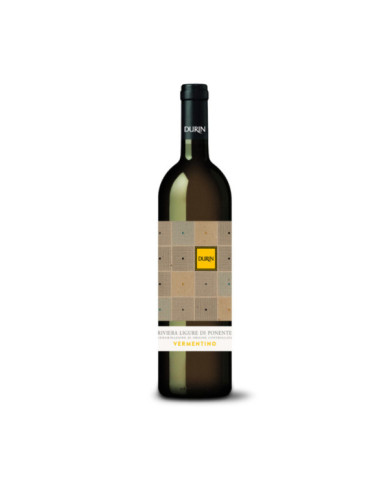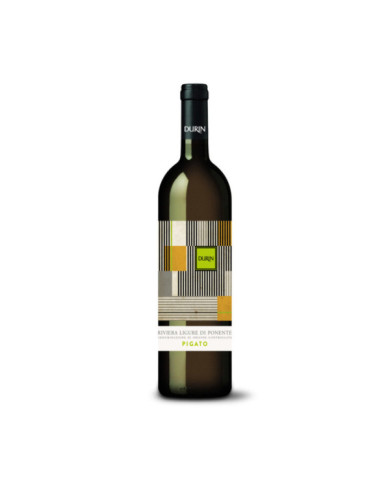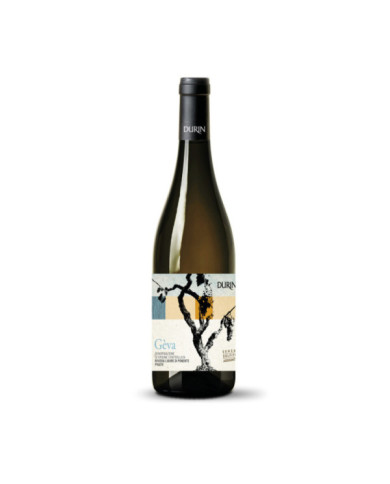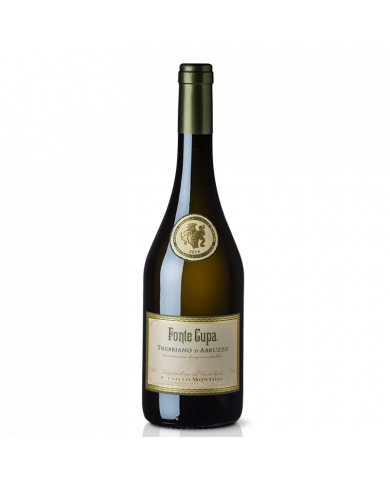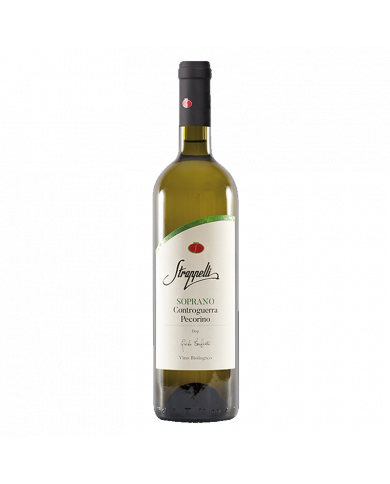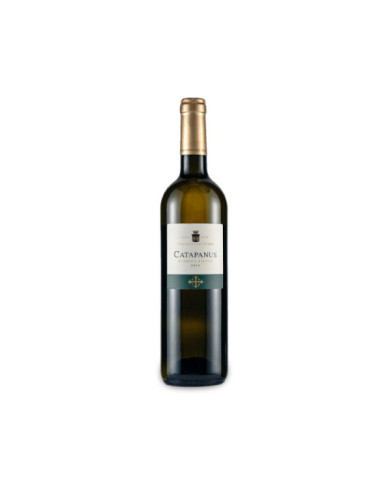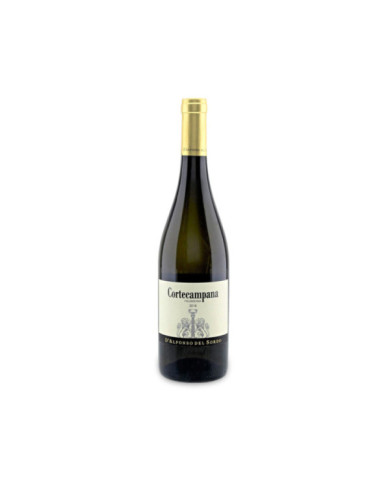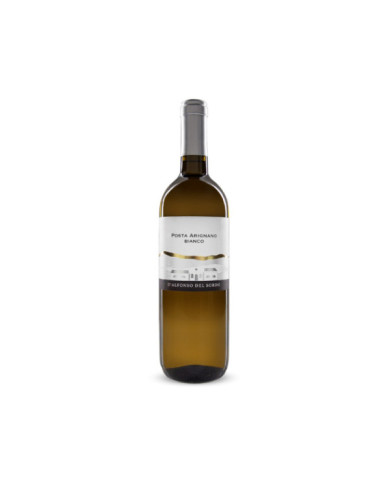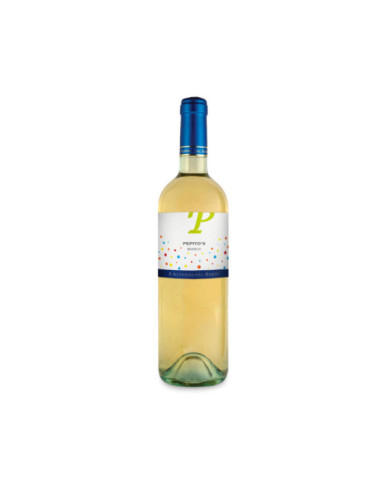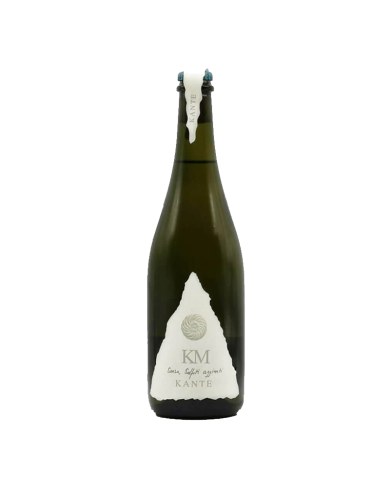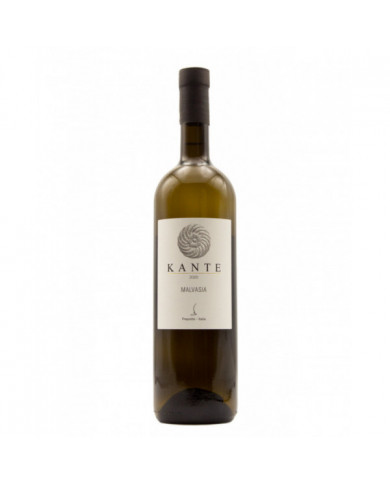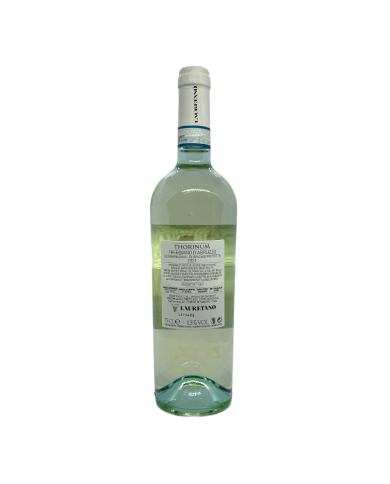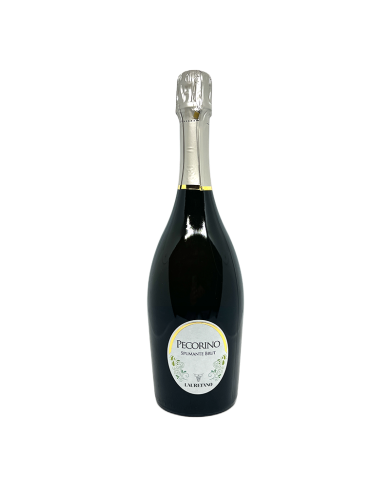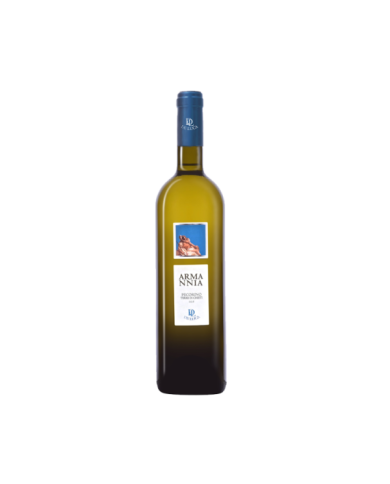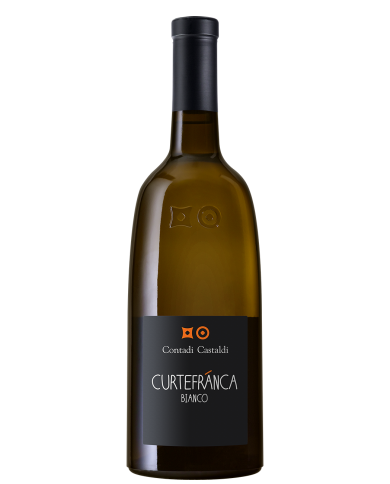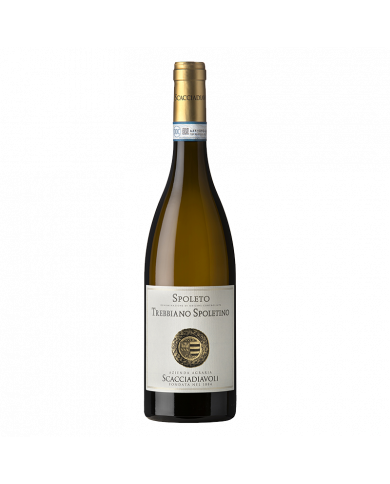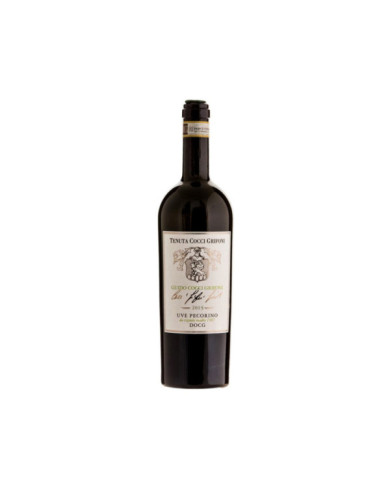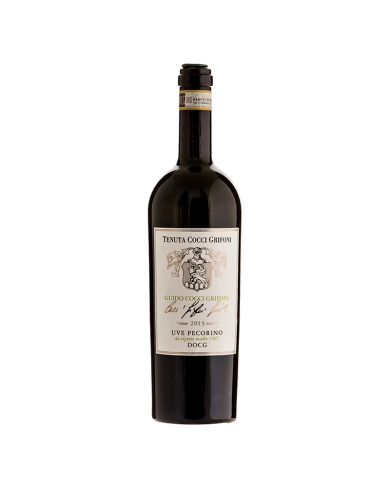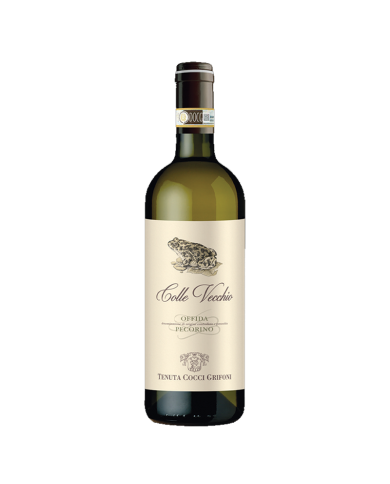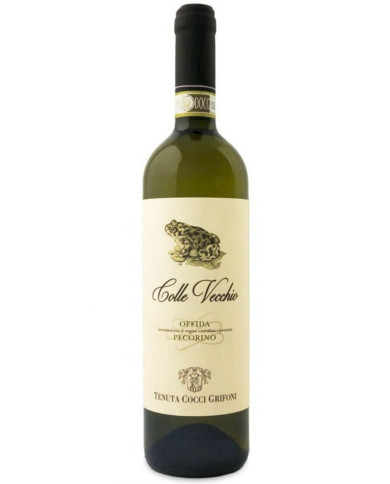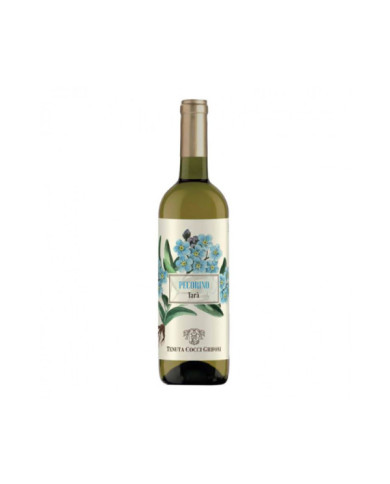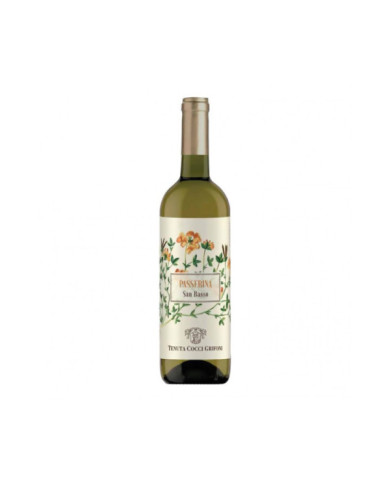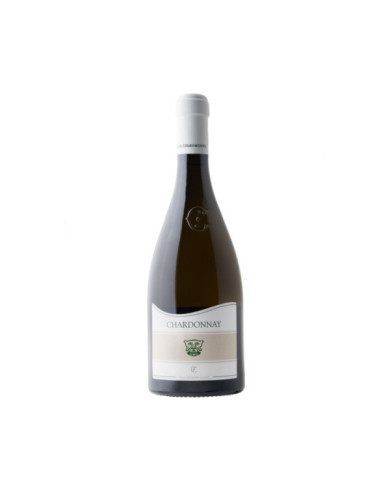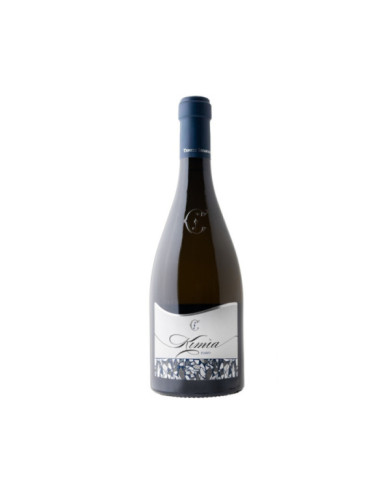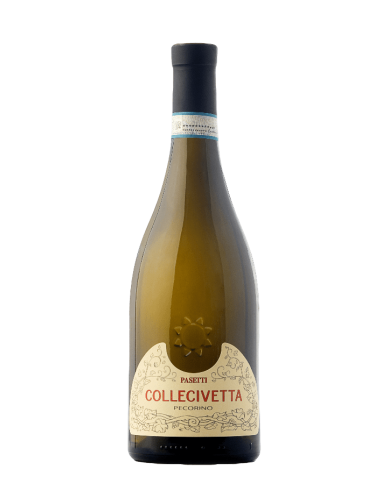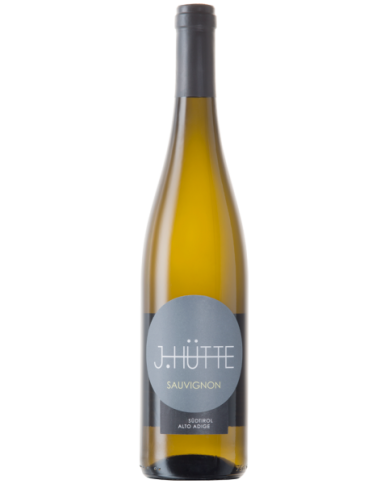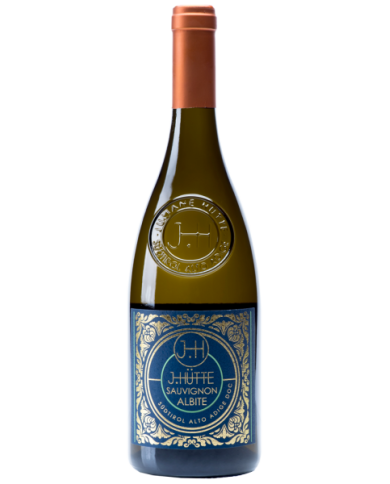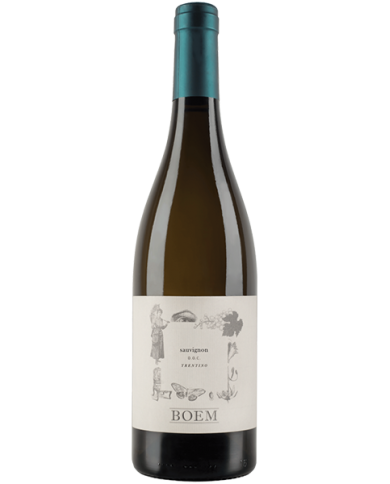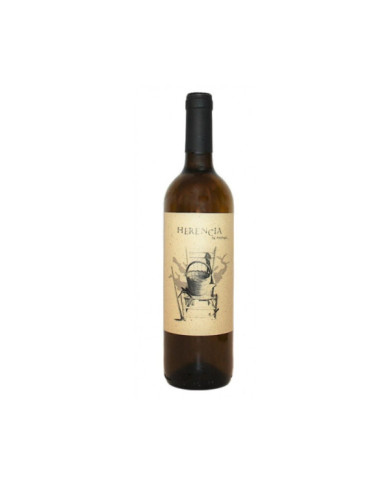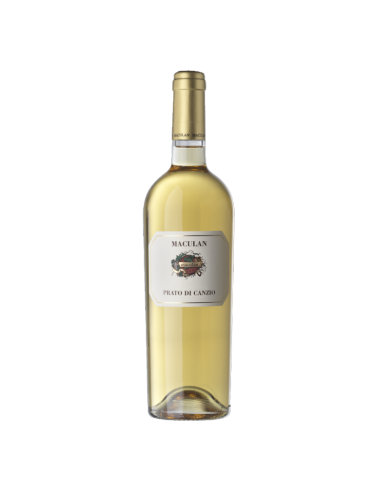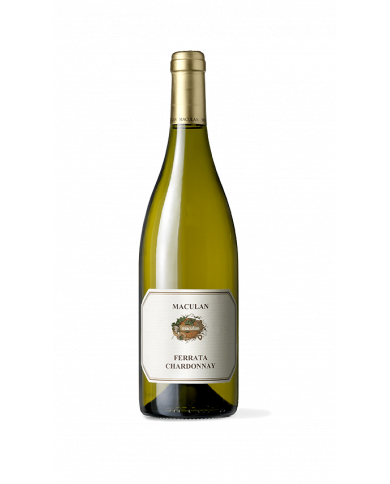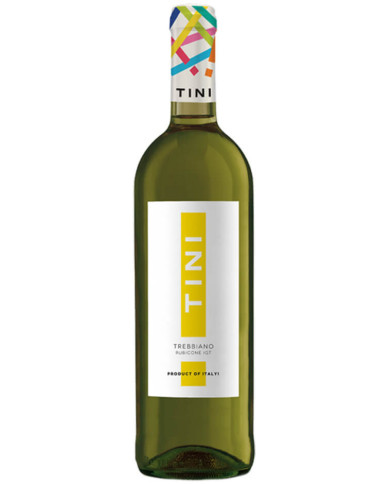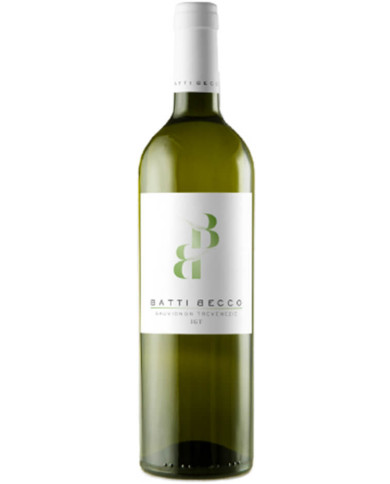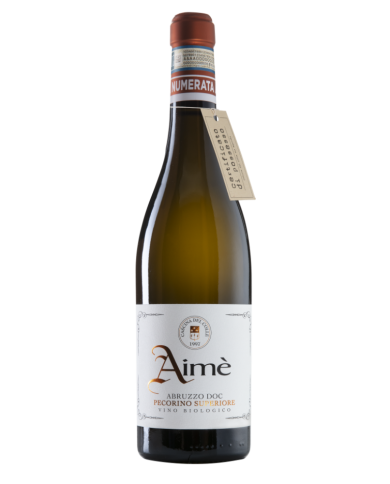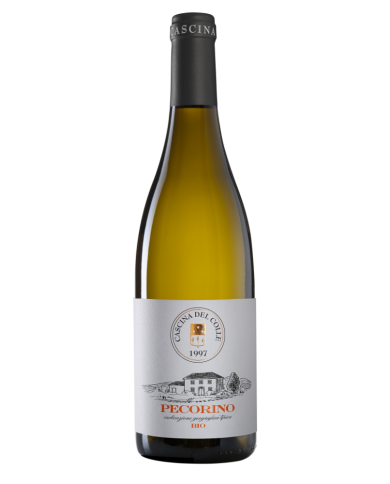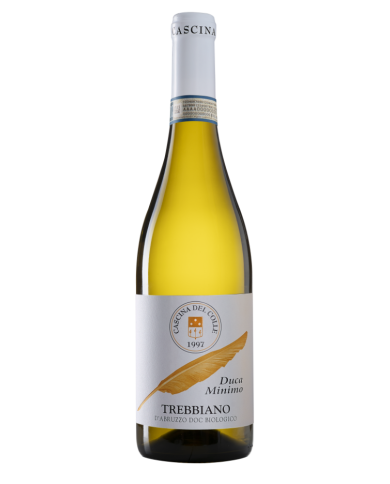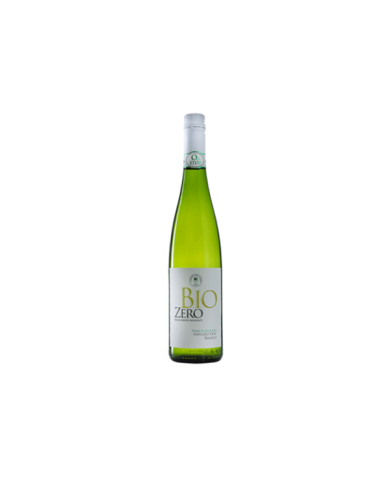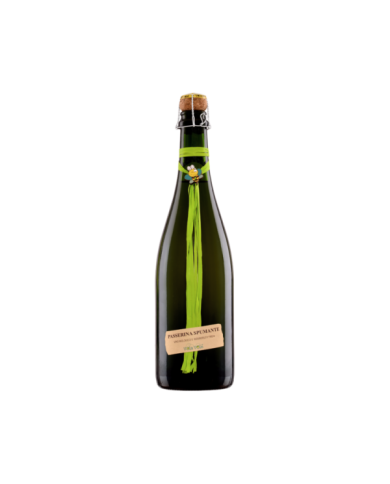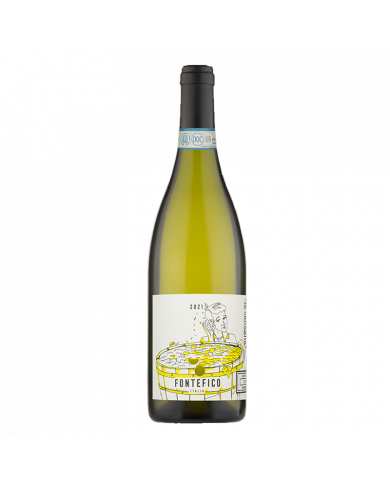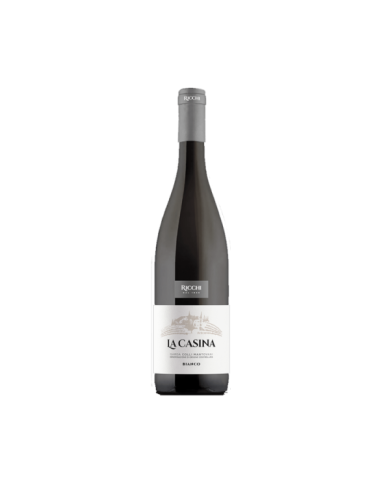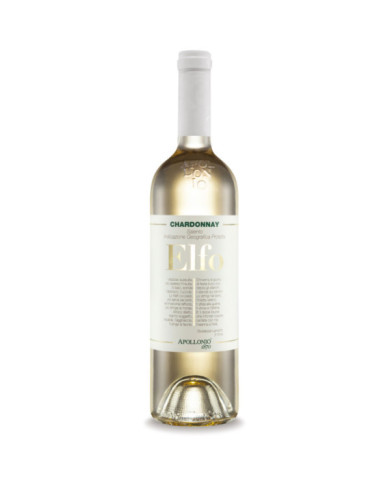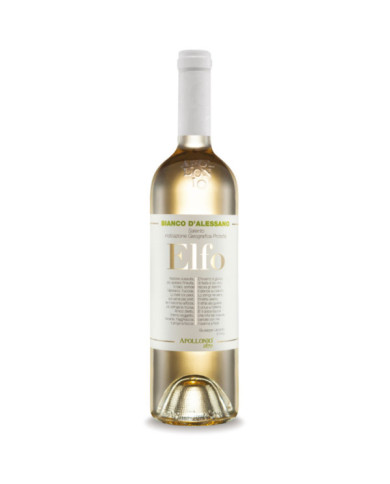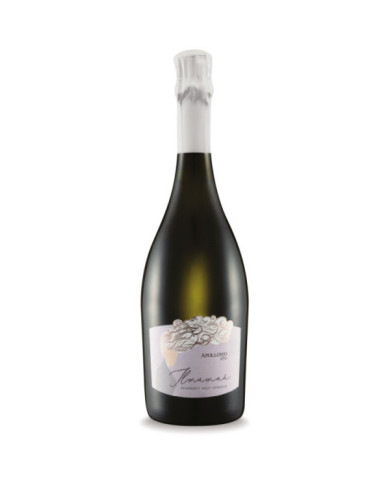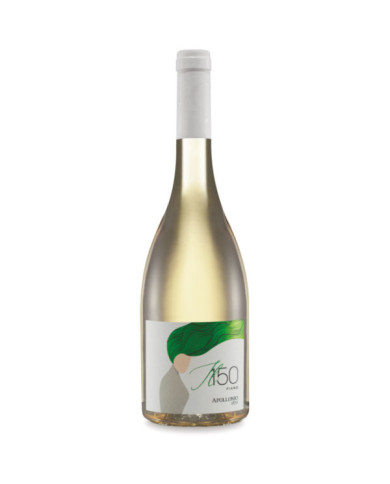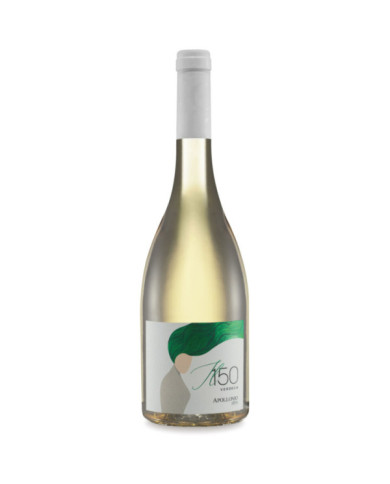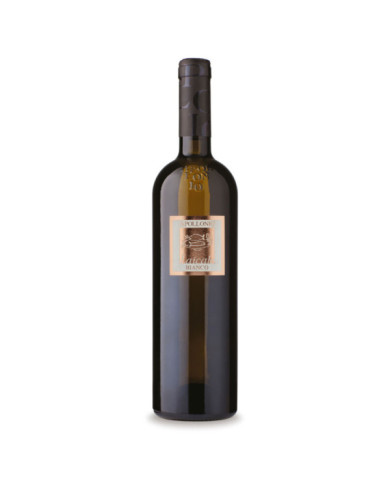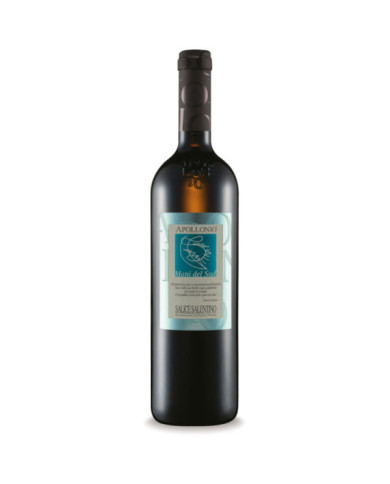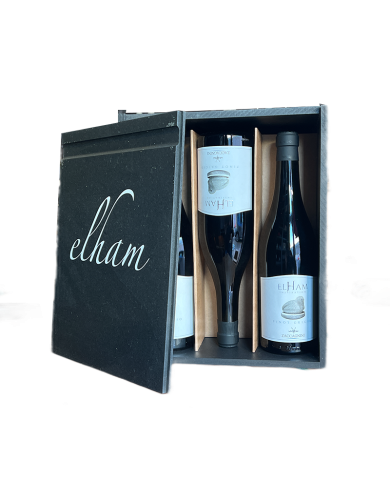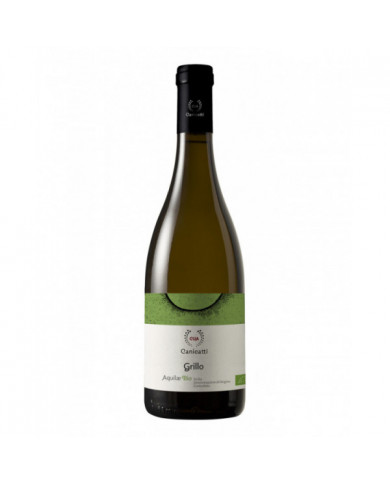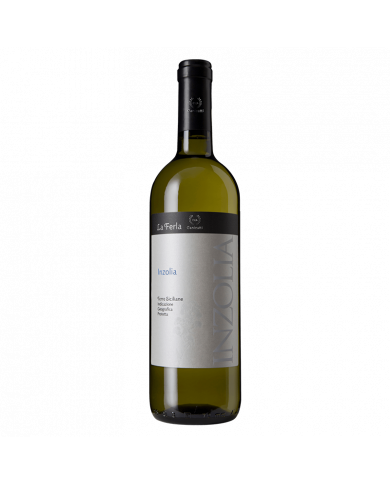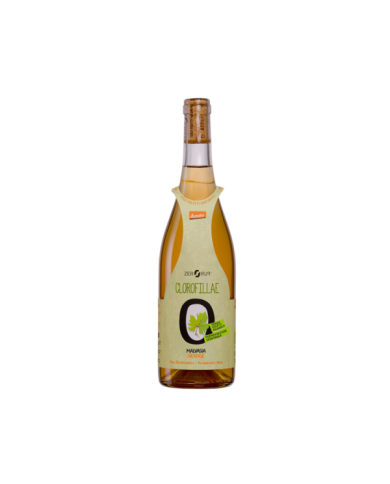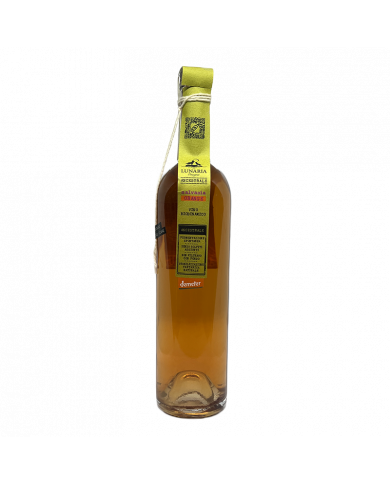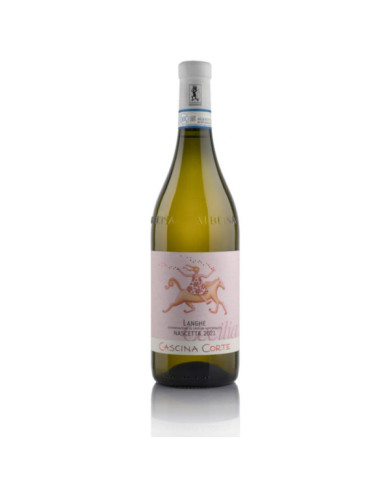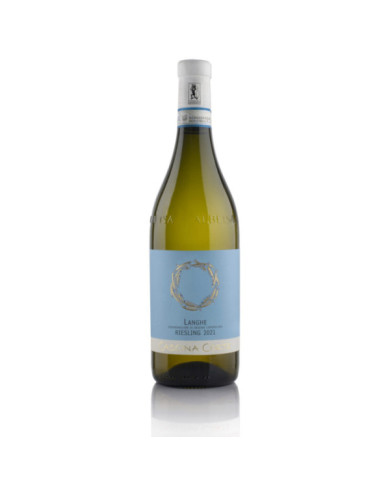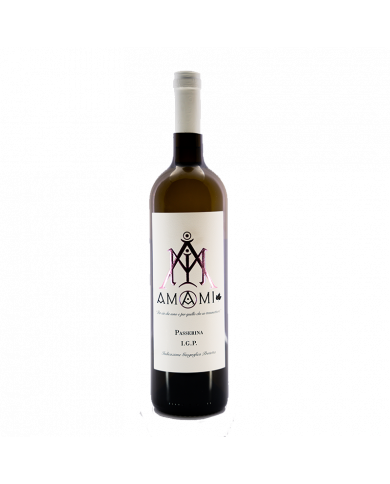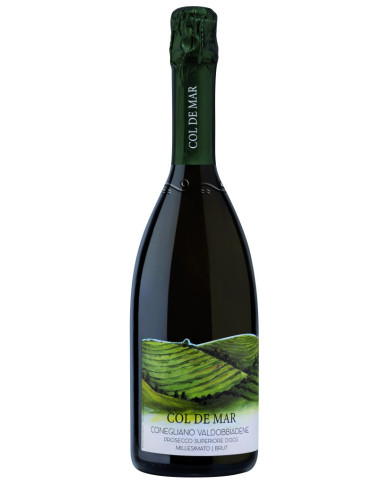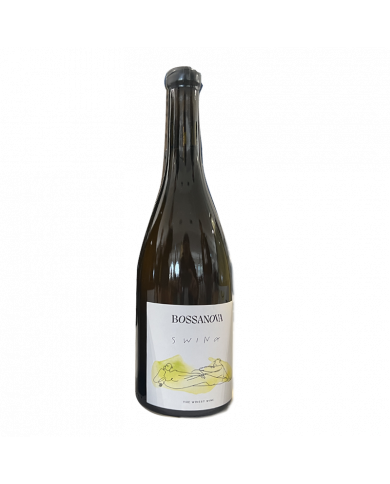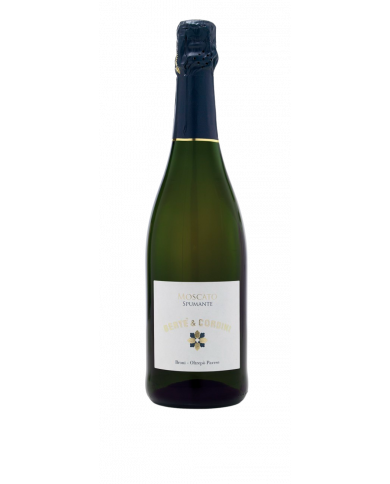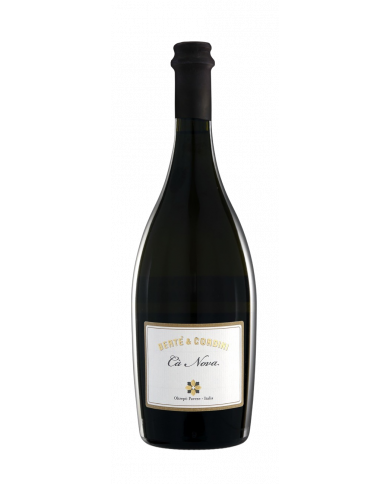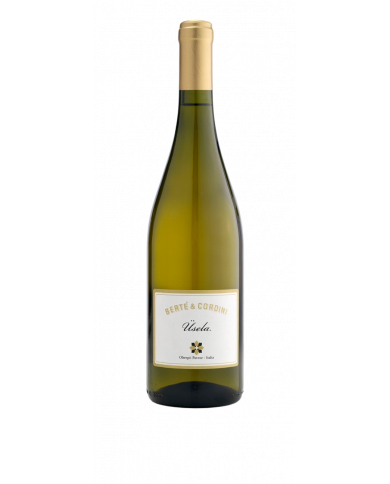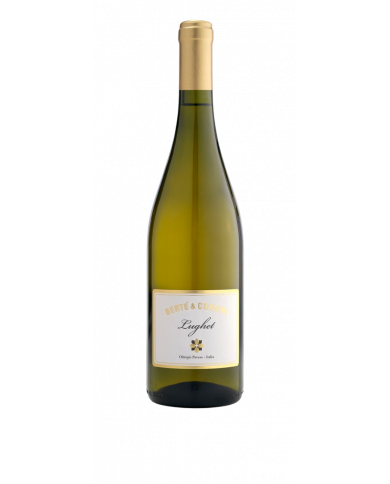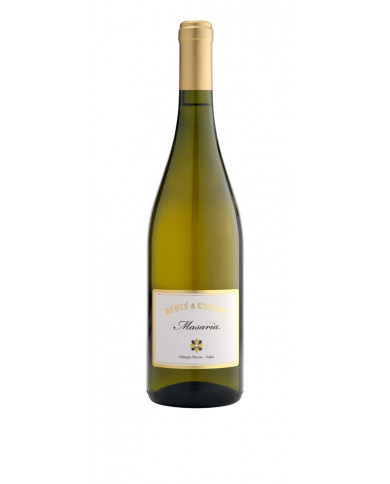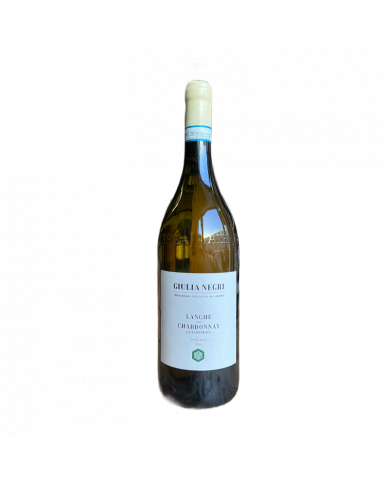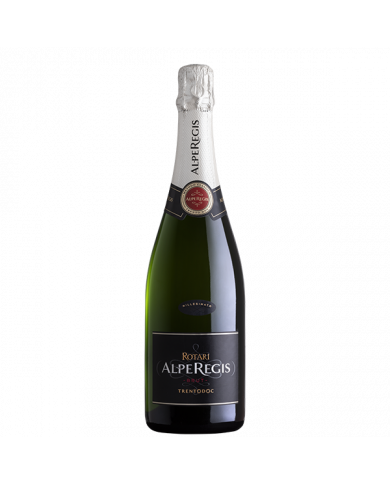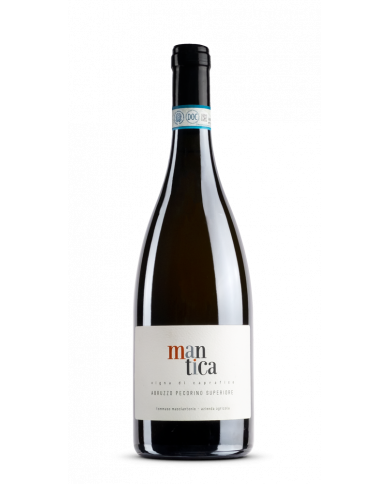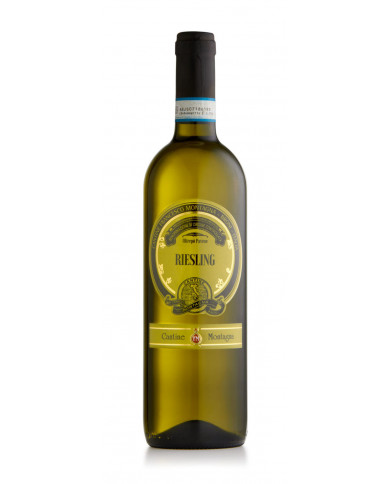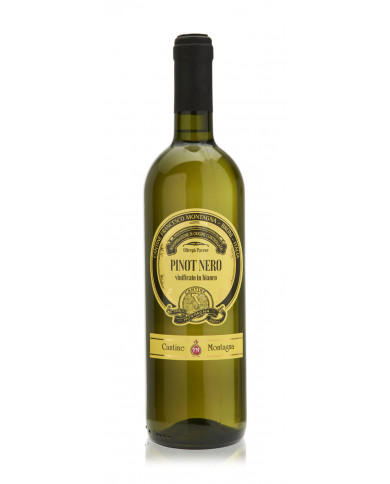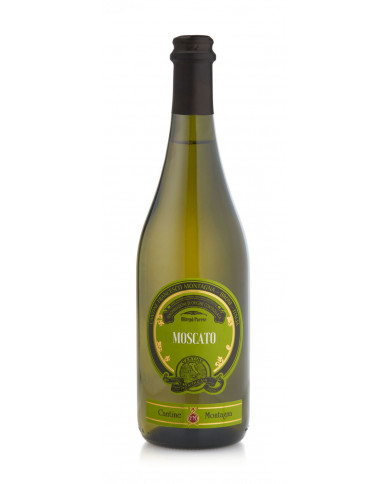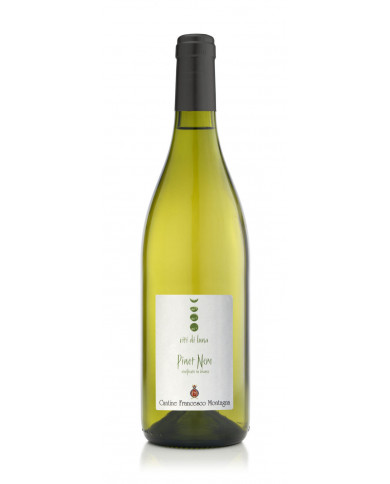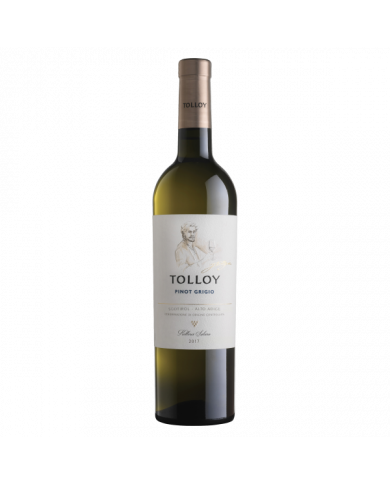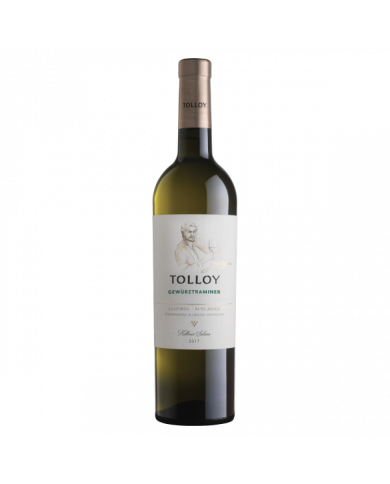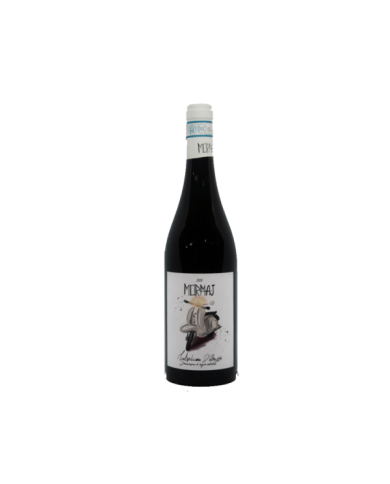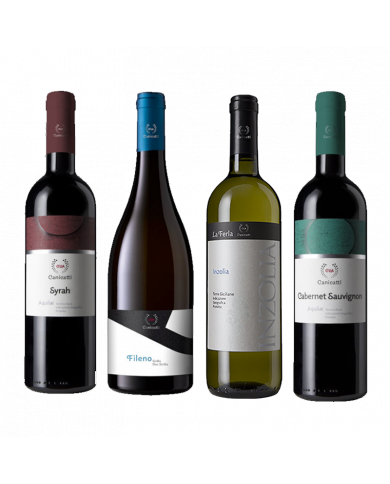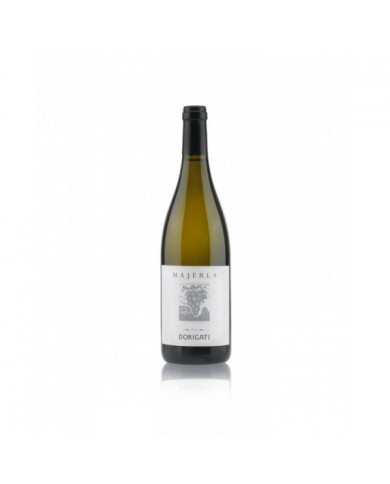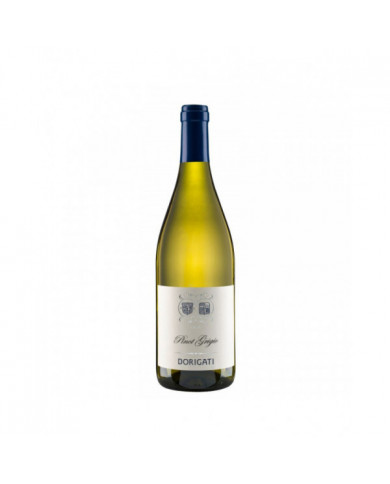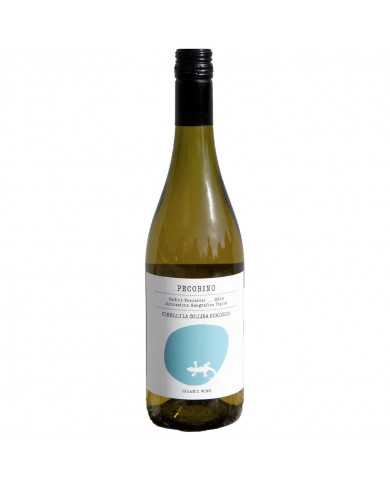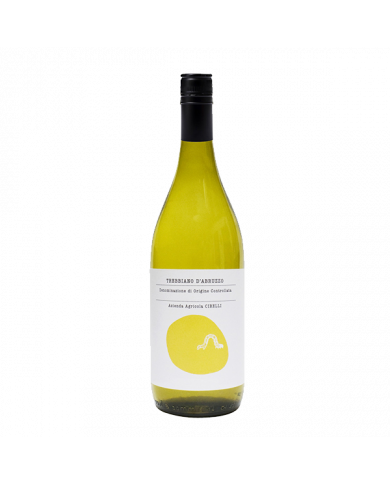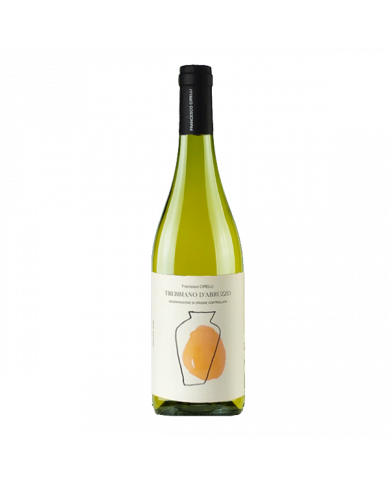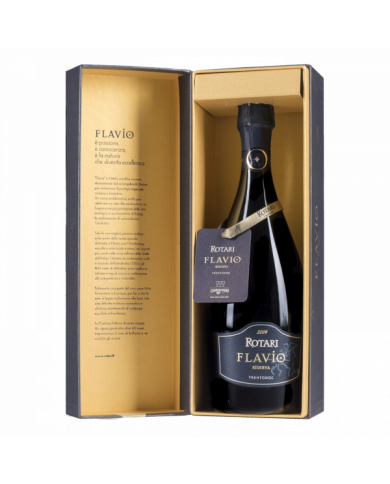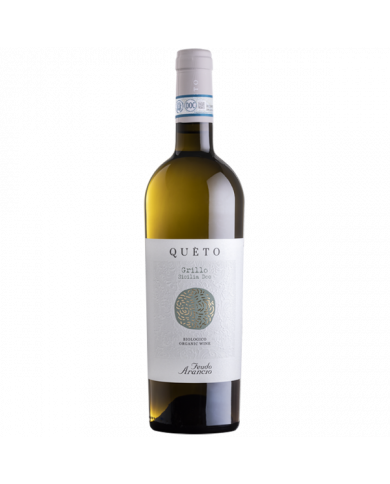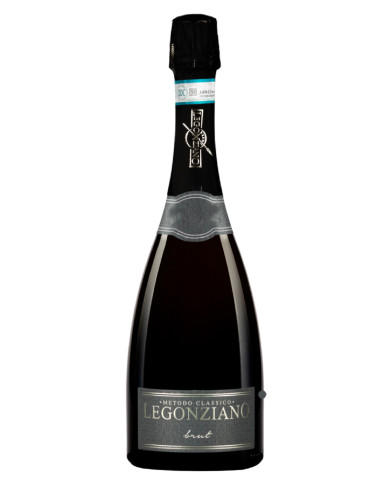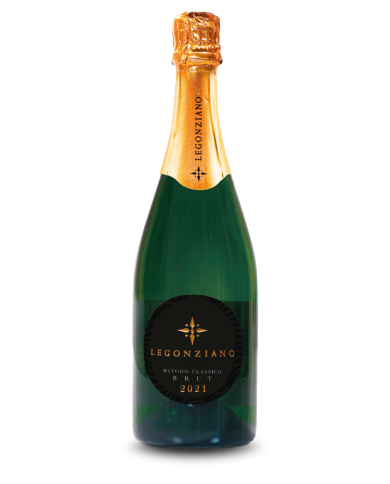The LAUS range contains three elite sweet liqueur wines, with persistent and intoxicating aromas, the result of a long production tradition that has always been oriented towards enhancing the flavors and aromas of the grapes left to ripen in the very hot Sicilian sun.
It is a sparkling wine obtained from Pinot Noir grapes, fermented for a prolonged period in an autoclave using the Charmat method.
The Complice Grillo from the Vinanti Ragusa winery is a DOC Sicilia made from one of the grape varieties with the greatest interpretative declination. Born in Chiaramonte Gulfi from warm and calcareous soils, the Vinanti white wine goes perfectly with cheeses, seafood and baked fish.
Conte Vistarino's Saint Valier was born in vineyards located on the Rocca de' Giorgi estate, in the province of Pavia. The name of the wine derives from the company toponym which has its roots in the original clone of Saint Vallier, in Provence. It is produced entirely with Pinot Noir grapes, selected and harvested only by hand in 20kg boxes. First of all, the grapes remain for one night in a cold room at 10┬░C. The white vinification takes place in the morning. The grapes are pressed to obtain the must, which is fermented in steel at a controlled temperature, where it remains on the fine lees for approx. 4 months, until bottling. It has a golden yellow colour. The nose opens with a rich and enveloping bouquet, characterized by notes of golden apple, peach and apricot. On the palate it is fresh and balanced, with a pleasant persistence. This white wine is very versatile in pairings and goes well with white meats and tasty vegetarian dishes, as well as fresh cheeses, including sheep's cheeses.
Conte Vistarino's Merlino was born in vineyards located on the Rocca de' Giorgi estate, in the province of Pavia. It is produced entirely with Pinot Grigio grapes, selected and harvested only by hand in 20kg boxes. First of all, the grapes remain for one night in a cold room at 10┬░C. The grapes are pressed to obtain the must, which remains in contact with the lees for 48 hours. Subsequently it is fermented in steel at a controlled temperature, where it remains for approx. 6 months, until bottling. In the glass the wine has a golden yellow colour. The nose opens with a rich and aromatic bouquet, characterized by notes of white peach, plum and apricot. On the palate it is structured, with a full and round body. This white wine is pleasant as an aperitif and also goes well with white meats, fish and rich salads.
Wine with a fresh, intense and persistent taste, with fruity and floral notes.
This excellent wine is obtained from various carefully selected grapes and left to dry naturally for 60 days. The wine obtained is first aged in barriques and subsequently in the bottle.
Porconero Falanghina Campania IGP white wine. Only falanghina aged in steel tanks for six months.
Porconero Fiano Campania igp. Pure Fiano aged in steel tanks for about eight months.
Wine obtained from Chardonnay grapes with a straw-yellow color with greenish reflections, a delicate, characteristic, fruity aroma, a savory, dry, full-bodied flavour. Recommended as an aperitif and with fish, shellfish and mollusc dishes.
It is the perfect glass for white wines with good structure and intensity; this type of wine certainly needs to "open up" (that is to better develop its aromatic, intense and complex endowment) and this is made possible by contact with oxygen (oxygenation) which, in fact, is facilitated by the generous dimensions of the chalice.
The last white born in Fertuna, it is characterized by its aromatic, rich and delicate expression, as well as by its marked acidity.
The name "Morandium" recalls the ancient Frentano place of worship, located near the Olearia & Vinicola Villese winery, characterized by the presence of a sanctuary active between the third and first centuries BC and a necropolis whose finds are exhibited at the museum national museum of Chieti and the civic museum of Vasto. The wine has a pale yellow color with greenish reflections. Very delicate bouquet, fragrant, deep, aromatic, fine and elegant taste, fruity and very fresh.
This wine is obtained from Sauvignon Blanc grapes with a light golden yellow colour, a delicate, aromatic, characteristic bouquet, a dry, velvety, full-bodied flavour.
Mark is a winemaker and comes from California. I, Helvetia, am Friulian. We met in Sicily in 1997. In 1998 Mark proposed that I visit Puglia to see the old Primitivo vineyards. According to studies by the University of Davis in California Primitivo and Californian Zinfandel are genetically identical.
Spumante Brut Varnish is crystalline in colour, yellow with greenish reflections, with a light, fine, rapid perlage. It has a pleasant, fruity, floral, intense, flagrant aroma. On the palate, a development of CO2, lively acidity, good acidity/sugar balance.

The name "Suadens" was carefully selected to represent the persuasive character of this wine, which constitutes a molecular project aimed at enhancing not only the native vines of Irpinia, but also the typical local fruit, grown exclusively in this area.
Valentina was arrogant, know-it-all, presumptuous, like her beauty, pure, alive, unique. If you wanted to define her in one word, there was no more suitable adjective: vain. At every step there was no mirror in which she didn't like to reflect herself, shop windows were her favorite mirrors because the whole city was full of them; the mirrors of the boutiques and beauty salons represented a daily practice in which to look in the mirror; even the pure porcelain saucers of the bistros were an excellent mirror for her, when, raising her cup to sip tea, she admired her reflection.
In 1950, in the town of Paterdoro there was a young girl, known for her long red hair who everyone called disconsolate, as her handsome boyfriend, a colonel in the Italian army had gone to war and never returned. The people of the village tried to bring comfort to the young woman, who gave her bouquets of fresh flowers just picked in the field, who gave her baskets of wild strawberries just to make her smile.
It is an aromatic variety that has its origins in South Tyrol. Its exclusive and unmistakable aroma owes it to the warm and sunny soils. It is a golden yellow wine with typical aromas reminiscent of rose petals, nutmeg spices and cloves.
The carefully selected grapes are pressed directly with the aid of inert gases in order to avoid any potential oxidation. The must obtained is clarified with a stop at a low temperature which allows decantation. The clean fraction is sent to fermentation with the addition of a part of skins and indigenous yeasts. During the fermentation phase, regular punching down is carried out which allows the extraction of natural tannins from the peel which preserve the integrity of the wine. At the end of fermentation, the wine obtained is decanted with the aid of inert gases and ages for 3 months on the yeasts that carried out the fermentation, followed by stabilization and bottling.
Pecorino is an extremely representative white grape variety for Abruzzo, and Jasci & Marchesani manages to give us a beautiful expression. Hand picked, vinification in white and aging for 6 months in steel vats and bottle.
Ancient vine introduced by the Greeks along the Tyrrhenian coasts, whose name derives from the characteristic shape of the bunches, whose grapes are grouped in pairs, from which the name Aminea Gemina derives. The mineral-rich soil, typical of the Greco cultivation area, is particularly suitable for this grape variety and this gives the wine its characteristic sapidity.
Vico Riviera N┬░ 99 Falanghina Beneventano IGT Ancient vine whose name seems to derive from the fact that the vine, with an expanded habit, was tied to support poles called "falanga" and therefore Falanghina or "vine supported by poles".
Refined and intense, structured and persistent , it is obtained from Chardonnay grapes with a small percentage of Grechetto, a native grape that brings acidity and binds it even more to the territory. The vinification takes place in Allier and Troncaise barriques, where the wine then matures for six months before being bottled and left to refine for another 10 months.
The 2021 vintage in Bolgheri was characterized by a prolonged dry period from June to September. However, unlike 2017, the particularly rainy winter helped to significantly increase the soil's water reserves, providing the vines with the right support throughout the production phase.
This Riesling is an excellent white wine produced with grapes from the homonymous vine that grows in Val Venosta. The vines are grown on Monte Sole, where there is less rainfall than the entire western area of Alto-Adige. These particular climatic conditions, and the composition of the morainic soils, give the wines of the Himmelreich cellar their unique and unmistakable character. Its robe is of a bright yellow colour, with intervals of greenish reflections. As it enters the glass, Riesling releases a multifaceted bouquet, the first scent that is perceived is sweet and ripe yellow peach. Notes of pineapple with the right point of ripeness, prickly pears and fresh grapefruit follow immediately afterwards. As it passes, the palate is filled with minerality, its juicy and exotic taste is incomparably mineral and refreshing. This fresh white wine with a delicious taste goes perfectly with light appetizers, fish in general and seafood, but is also perfect with Asian dishes.
Ancient vine introduced by the Greeks along the Tyrrhenian coasts, whose name derives from the characteristic shape of the bunches, whose grapes are grouped in pairs, from which the name Aminea Gemina derives. The mineral-rich soil, typical of the Greco cultivation area, is particularly suitable for this grape variety and this gives the wine its characteristic sapidity.
Ancient vine, of which we find the first traces in Pliny the Elder; the Apian grapes, from which the name of today's Fiano derives, were characterized by an intense sweetness and therefore particularly loved by bees.
Vico Riviera N┬░ 99 Falanghina Beneventano IGT Ancient vine whose name seems to derive from the fact that the vine, with an expanded habit, was tied to support poles called "falanga" and therefore Falanghina or "vine supported by poles".



So called because there are so many "grade: rare" steps that connect the historic center of Paternopoli to the part completely rebuilt after the 1980 earthquake
Among the vineyards of Irpinia, from the Latin Hirpus-wolf, a young Aras girl roamed around some time ago, a lover of the wonderful bunches of grapes.
The grapes are subjected to the cryomaceration process so that the product retains greater freshness and finesse. Straw yellow in color with greenish reflections, it is distinguished by the characteristic bouquet of green apple, acacia flowers and wisteria. Excellent combination of fullness and flavor. Excellent throughout the meal based on light dishes, fresh and medium-aged cheeses.
The varietal grapes of this Chardonnay come from our own vineyards located on the Montello. The intense bouquet of ripe fruit with spicy notes of thyme and hay with hints of apple and apricot, the full-bodied and harmonious flavor make this wine ideal for first and second courses in general, especially with white meats and fish as well as with cheeses medium/long seasoning.
Wine from Glera grapes and obtained with spontaneous refermentation in the bottle. Visually, it has a typical light haze; with a fragrant bouquet of crusty bread; floral. The taste is dry; dry and inviting. Rustic wine according to centuries-old traditions and suitable for cold dishes based on fine sausages; medium and long-aged cheeses; and again with fish and shellfish.
From Trebbiano di Lugana grapes produced in the area located in the southernmost stretch of Lake Garda. Straw yellow color with greenish reflections. Medium-bodied, but fresh with a delicately fruity and soft bouquet. Ideal with fish-based dishes, rice, first courses, and hors d'oeuvres in general.
The vineyards are located at an altitude of about 400 meters and fall within the territory of the Gran Sasso Monti della Laga Park.
Lively wine with pleasant notes that release freshness and intensity of fruity aromas, definitely versatile and bewitching.
It develops all the classic characteristics of the grape and knows how to thrill with its freshness and its elegant game of aromas.
Gamma is a white wine of great finesse, dry and vertical as the Etna wines know how to be, long-lived, balanced in the play between acidity and body of the wine. It has a straw yellow color and an aroma of wild herbs and altitude flowers. --- Gamma: in physics, Gamma is the notation of the Lorenz factor, an equation that relates the dilation of time to the contraction of physical quantities, discovered at the time by Einstein. Wine makes people talk, unites people, expands the perception of time. Anyone who is passionate will experience the long chats around the emotional details that wine offers. Hours in which emotion and passion gracefully distort reality, transforming discussions around wine into pleasant journeys through history, culture and places, without moving from the table. Whenever wine is on the table, in the glass, it becomes a means for those who are passionate about it for long and passionate conversations. Culture, art, gastronomy mix with the evocation of the places where wine is produced, a virtual journey that extends for hours. Time and space confuse, wrap around flavors, colors and aromas, evoking emotions that come from often unknown lands.
Kudos is a white wine from an ancient, elegant and profound vineyard. Acidity and thickness played on the blade of the knife, to be drunk young or stored for years, according to his own inspiration
Malvasia Colle Tr├Ā comes from a long Malvasia clone, native to the Vibratian territory with tight and elongated clusters. Due to its turgid and at the same time fragile grapes, it is more easily subject to rot, therefore it is not always possible to vinify it every year.
Dry white wine with a clear appearance and a golden yellow colour. On the nose it is persistent, fine, harmonious, with hints of bitter orangeŌĆ”
Dry white wine. Straw yellow in color with warm golden reflections. Intense and enveloping bouquet, characterized by fruity notes andŌĆ”
Dry white wine. Straw yellow color with greenish reflections. On the nose it has an elegant aroma of fresh fruitŌĆ”
It has a deep straw yellow color with slight golden reflections. The aromas are very intense and persistent, typical of the vineŌĆ”
Dry white wine with an intense straw yellow colour. The nose is delicate but persistent, fine, with hints of green apple and white peachŌĆ”
Dry white wine with a pale straw yellow color with greenish reflections; persistent and delicate scent of wild flowers, herbsŌĆ”
Dry white wine. Pale straw yellow colour. Delicate, fresh and subtle aroma, characteristic with hints of herbsŌĆ”
Dry white wine. Straw yellow color with reflections tending towards gold. Wide, intensely fruity, fragrant, persistent bouquetŌĆ”
Dry white wine. Straw yellow in color with warm golden reflections. Intense and enveloping bouquet, characterized by fruity notes andŌĆ”
Brilliant in color with pale greenish-yellow reflections. The bouquet is very fine, fruity, with a hint of ripe apple characteristic of the vine of origin. Pleasantly fresh taste on the palate, it maintains an aromatic and gustatory persistence.
Our Pecorino Soprano Strappelli comes from a rather young vine of about 20 years. It is the earliest of the white vines; its harvest during the first week of September opens the dances of the grape harvest. The name Soprano was born to associate the strong voice of the Soprano with the strong character of Pecorino.
CATAPANUS was the name of the ancient provincial delegate of the emperor, in charge of the military and civil government of the whole of southern Italy in the Byzantine period. We wanted to dedicate our most important white grape variety in our area to this authoritative figure: BOMBINO BIANCO
The sound of the bell has always marked important moments in the life of the populations: in fact, in rural areas, the sound of the bell often indicated the moment of pause in which the peasants stopped working to consume their meal. Even today, in many ancient Apulian farms, we can see in the central space called "court", the presence of a small bell.
POSTA ARIGNANO is the name of the ancient farmhouse that stands in the center of the "Coppanetta" estate where, in ancient times, travelers who crossed the Daunia lands found refreshment and very often also the shepherds in transhumance from nearby Abruzzo. Today the farm is surrounded by about 30 hectares. of vineyards that give rise to most of our labels.
The white bombino also lends itself easily to the production of lively and sparkling wines, thanks to its acidic vein which allows to obtain fresh and fragrant wines. PEPITO'S is proof of this: Fresh and delicate, characterized by a pleasant perlage, very cold it is an excellent aperitif, but also a pleasant accompaniment to fish and shellfish dishes.
"salty, spicy, fragrant" my Malvasia is the only variety with which I was able to capture the taste of the sea and iodine
Lands of Offida DOC Passerina
light amber color with antique golden tones; on the nose apricot, peach, and spices; in the mouth sweet without excesses, almondy, elegant and very full-bodied, long and persistent.
Trebbiano d'Abruzzo DOP has an intense straw yellow colour; the nose is characterized by intense and delicate aromas; on the palate it is sapid, velvety, harmonious.
The color is straw yellow with greenish notes, the fruity scent with citrus notes, persistent. Good structure, excellent freshness, full and intense flavour. Excellent as an aperitif, it accompanies all fish-based dishes revealing a predilection for shellfish and seafood, even raw.
With a pale straw yellow color, a fresh bouquet, with tropical nuances that blend with elegant floral scents. The flavor is full, with a good structure and a long persistence with mineral notes. We recommend pairing with fish, white meats and cheeses.
Straw yellow color with greenish reflections, it begins on the nose with intense and pleasant aromas with notes of white-fleshed peach and tropical fruit, while on the palate it develops a full sapidity accompanied by a great minerality.
That the Trebbiano Spoletino grape is of high enological interest is now a certain fact. It is an ancient vine that has only recently been rediscovered. It can be grown in the territory of Spoleto and Montefalco. In our cellar we have aimed to capture the finer and at the same time intriguing soul of this grape. We have given space to its changing and original aromas with a vinification in amphora that respects these characteristics and then we have strengthened its expressive character with an aging in untoasted wood and amphora for at least 9 months. In our opinion the result is that of a great white wine for aging, capable of surprising at every sip for its richness of facets.
Our first hectare, the one from which the history of Pecorino began. The first parent of Colle Vecchio is today dedicated to Guido Cocci Grifoni and to the bottle that bears his name. It is our most recent version of Pecorino, a wine made in a few numbered specimens, in memory of who, where and when. And not to praise or glorify the past, but to photograph a moment of our past that has become present and future. Using descriptors today, for a wine that will have a life of more than ten years, seems almost out of place. Only a few notes therefore, to give a reference, a trace of his first, very young expressions. Among our whites it is certainly the fullest, the most saline, the most present and the softest. It opens with notes of ripe apple and then moves on to intense and fleshy yellow flowers. The aromatic herbs come forward decisively, accompanying a fascinating scent of star anise.
Our first hectare, the one from which the history of Pecorino began. The first parent of Colle Vecchio is today dedicated to Guido Cocci Grifoni and to the bottle that bears his name. It is our most recent version of Pecorino, a wine made in a few numbered specimens, in memory of who, where and when. And not to praise or glorify the past, but to photograph a moment of our past that has become present and future. Using descriptors today, for a wine that will have a life of more than ten years, seems almost out of place. Only a few notes therefore, to give a reference, a trace of his first, very young expressions. Among our whites it is certainly the fullest, the most saline, the most present and the softest. It opens with notes of ripe apple and then moves on to intense and fleshy yellow flowers. The aromatic herbs come forward decisively, accompanying a fascinating scent of star anise.
A milestone of our hills brought to light thanks to the adventurous spirit of Guido Cocci Grifoni. Some wonder who took over the lead. We in the winemaking choices, he in the expression of his nature. Neither one nor the other. We have listened to and explored his intentions for years, respecting and supporting his nature and his inclinations so that he became what he wanted to be. And today it is a dry, intrepid wine with impactful acidity, full and soft. Fruity of ripe pear, it turns to floral notes of lily of the valley and broom and then returns to fruit, this time tropical, such as mango. The freshness is manifested with accents of lemon grass and sage to be enjoyed for years.
A milestone of our hills brought to light thanks to the adventurous spirit of Guido Cocci Grifoni. Some wonder who took over the lead. We in the winemaking choices, he in the expression of his nature. Neither one nor the other. We have listened to and explored his intentions for years, respecting and supporting his nature and his inclinations so that he became what he wanted to be. And today it is a dry, intrepid wine with impactful acidity, full and soft. Fruity of ripe pear, it turns to floral notes of lily of the valley and broom and then returns to fruit, this time tropical, such as mango. The freshness is manifested with accents of lemon grass and sage to be enjoyed for years.
Falerio Pecorino tells a story that comes from the past. A blend that, in our bottle, sees Trebbiano refine the power of Pecorino for a glass suitable for the most carefree moments of the day, including those at the table. Pear-fruity, it moves to floral sensations that bring back jasmine, then returning to the fruit with green notes of kiwi and round sensations of passion fruit. The sincere and pounding sip of Pecorino relaxes on the memories of wild flowers typical of the Trebbiano that accompanies it in this bottle.
Known for its generosity in producing fruit, Passerina has always quenched the thirst of a large number of people. Today we know its needs and we know how to make it express its effective potential. Indeed, it is capable of describing a floral bouquet of rare freshness. We offer it in its still version, from the grapes of the Tenuta San Basso, full of May flowers and rounded off by ripe fruit. The opening is citrusy of cedar, but linden flowers and very fresh chamomile appear shortly after. This last perfume is repeated harvest after harvest, giving a recognizable trait to our Passerina, evidently defined by our land. The sip swells with ripe yellow plum and pink apple, giving fullness to the very fresh character of this wine.
A ŌĆ£mustŌĆØ from the Pasetti company. Authentic mirror of the strong Abruzzo tradition, which is expressed here in the excellence of one of its native vines. This young pecorino in purity today represents a third of the company's production.
The result of a merger, which took place in 2001, between the Cantina Produttori Santa Maddalena and the Cantina Produttori Gries, this kaleidoscopic winery offers an incredible range, complete in the multiplicity of products and refined in the interpretation of the territory. The quality standard is truly impressive and does not fail to satisfy any palate, even the most demanding one, with the right attention to both native and international vines. A splendid example of quality is this Sauvignon, a semi-aromatic vine, characterized by a great variety of aromas, here incredibly enhanced by the warm, sandy soils and the breezy climate, which constitute the ideal terroir for a great wine.
Rich in sodium, albite is a typical mineral of the Alps, in particular of Valle d'Aosta, Piedmont and Alto Adige, where it finds the ideal subsoil for its development, proving to be a faithful ally for the vine. This Sauvignon is proof of this, presenting itself as the perfect synthesis between territory, climate and grape variety, thanks to its typicality which, in combination with albite, gives life to an authentic, complex and characterful label, capable of perfectly combining, to the gentleness of citrus and floral tones, an important structure and a strong minerality.
Sweet white wine, it is the dessert wine par excellence. It has a more or less intense straw yellow color depending on the vintage, an intense, aromatic and very persistent fruity aroma. The sweet taste is in harmonious balance with the low alcohol content (5% vol.) and with the acidity, never very high, but which gives the product a pleasant freshness. PAIRINGS: fresh fruit (peaches, strawberries, berriesŌĆ”) panna cotta cream-based desserts.
Trentino DOC Sauvignon Boem is a wine with a classic and elegant style. Produced from the grapes of the same name, among the most widespread and interpreted in the world, Trentino Doc Sauvignon 2019 Boem grows on hilly terrain at about 400 meters above sea level. The scents of the forest, the notes of citrus and elderflower, the greenish reflections are some of the characteristics of this great mountain land that the Trentino DOC Sauvignon Boem stores in every bottle and offers in every sip which always ends with a long finish and intense.
A selection of organic Chardonnay grapes undergo alcoholic fermentation at low temperatures in stainless steel tanks. Subsequently the wine is bottled clean and the fermentation in the bottle ends. The sediments that can be found inside the bottle are the yeasts that have finished fermentation. From there we get this fresh, aromatic wine with carbonic notes.
The historic white wine of Maculan is reborn, where three grape varieties are blended in steel tanks in spring and then rest together for at least a year in the bottle. Excellent with vegetarian first courses, fish soups, pasta and risotto, baked and grilled fish. It can be "forgotten" in the cellar for about ten years!
Excellent pairing with small dry pastries or typical sweets such as "fregolota".
Excellent pairing with small dry pastries or typical sweets such as "fregolota".
Maculan 's Moscato Dindarello was obtained from 100% Moscato Bianco grapes grown on hilly soils of limestone and tuffaceous matrix located in the Breganze area (VI). After the harvest, the grapes were subjected to drying in the loft for about 1 month, a practice which allowed the grapes to obtain a higher sugar concentration. The alcoholic fermentation, aimed at transforming the sugars into alcohol, took place in steel vats. Before being marketed, this delicious straw wine rested for 3 months in the bottle.
It is suitable for savory dishes, be they soups or fish, but also goes well with white meats.
Around the 12th century, an ancient villa known as ŌĆ£il castellare de YliceŌĆØ stood near our cellar. The name was probably due to the Latin term ilex (holm oak), a particular variety of oak very common in our area. To date, no trace has remained of this historic villa, but the passion and respect we have for our territory has prompted us to pass on the name of that ancient presence.
Pecorino di Cascina del Colle is a juicy white wine from Abruzzo with a citrus freshness that presents itself to the eye with a straw color furrowed by green reflections. It has a scent of lemon peel, green apple and wild flowers and maintains an excellent flavor on the palate.
Pecorino di Cascina del Colle is a juicy white wine from Abruzzo with a citrus freshness that presents itself to the eye with a straw color furrowed by green reflections. It has a scent of lemon peel, green apple and wild flowers and maintains an excellent flavor on the palate.
Ducaminimo Trebbiano d'Abruzzo DOC Cascina del Colle , its straw yellow color to the eye, the scent recalls pleasant floral and fruity notes of apple and pear. On the palate it is fresh and characterized by fruity returns, resulting in a highly drinkable wine.
Trebbiano d'Abruzzo DOC 'Duca Minimo' from the La Cascina del Colle winery is an organic white wine with a pale straw yellow colour. The nose is delicate with hints of white flowers, citrus and winter melon. In the mouth it is fresh, sapid with a good final minerality. As for the Montepulciano red version, the origin of the name for this label also recalls how the Abruzzese poet D'Annunzio liked to call himself, or rather the 'Duke Minimo'.
The only organic wine certified for biodiversity in Abruzzo. The winery selects the yeasts on pollen from the local flora. The bee collects the nectar of the flowers and, to preserve it, uses lactic ferments and yeasts, a practice that is a million years old. From this pollen the yeasts are selected for the fermentation of this wine. Ideal with raw and fried fish, risottos and medium-aged cheeses.
This superior pecorino comes from the white vineyard, a spiteful vineyard because, despite our attentions, it has very low yields, as if it wanted to avoid the effort of producing more grapes. But then he is forgiven by giving us a unique, fresh and voluminous wine, which you will never tire of drinking. It is the "rogue" of Fontefico.
Characterized by its ampelographic composition, that is to say for the vines allowed for its production, delicate pleasant almost crunchy in its pleasantness to drink.
Verdeca is a native white grape variety of Puglia, with greenish hues that suggest its name. Elegant, mineral and very vigorous. Bianco d'Alessano is an ancient white grape variety, originally from a small town in the lower Salento from which it takes its name. It is appreciated for its adaptability to various types of terrain. "Latecomer" in sprouting and ripening between September and October.
Thanks to its excellent adaptability, Chardonnay is one of the most widespread white grape varieties in the world. Cultivated in all climatic conditions and in all areas, on clayey-calcareous soils and with a temperate, warm and windy climate, it ensures great results.
Salento is identified by three climatic elements: the sun, creator of generous sugar levels, the sea, responsible for the minerality of the wines, and the wind which makes this territory naturally free from diseases and particularly suitable for the production of "natural" wines. Characterized by extensive flat areas and modest hills, Salento is geologically made up of a medium-textured limestone structure.
Fiano, also known by the name Apiano, is an ancient southern vine whose cultivation dates back to Roman times. The name derives from the Latin word Apianus (bee) due to the sweetness of its berries, much appreciated by bees.
Verdeca is a native white grape variety of Puglia, with greenish hues that suggest its name. Elegant, mineral and very vigorous.
Thanks to its excellent adaptability, Chardonnay is one of the most widespread white grape varieties in the world. Cultivated in all climatic conditions and in any territory, on clayey-calcareous soils and with a temperate, warm and windy climate, it ensures great results.
Color: Light yellow color with coppery reflections. Smell: Intense bouquet with hints of melon, carob, pear, almond blossom and with hints of ginger and candied papaya. Taste: Fine and elegant taste, well structured, enveloping, savory and well balanced.
CVA's Grillo Fileno is the best white wine in Italy
The highest score ever, among the Italian white wines offered for tasting at the Concours Mondial de Bruxelles 2022: Fileno, harvest 2021, Grillo in purity, is the best white wine in Italy. An extraordinary result for CVA, a small but prestigious wine cooperative in the Agrigento area.
An innovative white for flavor and freshness with the great versatility of an important vine of the Sicilian tradition; with clear and harmonious aromas. On the palate decisive, fruity, with an appropriate and pleasant acidity.
An innovative white for flavor and freshness with the great versatility of an important vine of the Sicilian tradition; with clear and harmonious aromas. On the palate decisive, fruity, with an appropriate and pleasant acidity.
Faithful to tradition yet modern and innovative. Inzolia in purity, a wine with its aromatic characteristics, which stands out for its savory and mineral taste.
At the sight it is of an opalescent straw yellow, the nose is very intense, typically aromatic and with a strong balsamic scent and a vegetal note. The taste is dry, fresh and savory.
Spontaneous fermentation Without added sulphites Unfiltered with bottom Natural stabilization Sulphite-free, Organic, Vegan and Biodynamic Wine Demeter certified produced with the Ancestral method
Prosecco wine produced with glera grapes grown in the hilly areas of the denomination which extends for 15 municipalities between Conegliano and Valdobbiadene.
Trebbiano d'Abruzzo Bossanova is an Abruzzo white wine from the hills of Teramo, briefly macerated on the skins and aged for about 9 months in vitrified concrete tanks: it expresses aromas of hay and chamomile, yellow-fleshed fruit and hints of sage, while at sip is harmonious, taut and of excellent freshness, embellished with mineral tones and an intriguing savory persistence.
Obtained from white berried grapes produced in the area of the Salice Salentino denomination, this wine is crystalline with golden reflections. The de-stemmed grapes undergo a cold pre-fermentation maceration in a soft press. The must is clarified before the inoculation of the selected yeasts and the alcoholic fermentation is carried out at a controlled temperature.
AlpeRegis is dedicated to lovers of good food and good living. The name evokes the royal figure of Rotari and the alpine territory that has contributed to making Rotari legendary by setting his deeds in history. This vintage Trentodoc is obtained from a selection of Chardonnay grapes harvested by our winemakers in the mountain vineyards north of Trento. The soft pressing and low-temperature fermentation with selected yeasts allow the aromas of the grapes to express themselves at their best and blend with those produced by the yeasts. In spring, when the base wines have reached the ideal refinement for the second fermentation, the Alperegis Brut cuv├®e is elaborated, assembling the base wines that best express the characteristics of the mountain Chardonnay. Aging on the lees is a minimum of 36 months.
Pecorino from organic farming Abruzzo superior doc, Vigna di Caprafico. Mantica is an ancient name, it tells the story of a parcel of land, Mantica Longa, the object of a family sale.
Produced only with grapes from its own vineyards grown in South Tyrol in the valley floor and on the low hills. 100% Pinot Gris with traditional vinification in white at a controlled temperature around 18-20┬░C.
Produced only with grapes from our vineyards grown in Alto Adige on the medium hill in Pochi di Salorno. It is characterized by small bunches with pinkish berries tending towards bronze. With a distinctly aromatic taste, it is distinguished by the typical varietal aromas, softness and balance. White vinification with cold maceration and fermentation at 18-20 ┬░C.
Fileno, harvest 2021, 100% Grillo, is the best white wine in Italy. An extraordinary result for CVA, a small but prestigious wine cooperative in the Agrigento area.
From the vinification of Nero d'Avola and Nerello Mascalese grapes, a ros├® wine of great pleasure and fragrance takes shape. Intense in the aromas, elegant, savory and mineral on the palate.
Faithful to tradition yet modern and innovative. Inzolia in purity, a wine with its aromatic characteristics, which stands out for its savory and mineral taste.
Intense straw yellow. The nose is expressed with hints of exotic fruit and floral notes of hawthorn. On the palate it is fresh, with good flavor and balanced.
Cirelli 's Trebbiano d'Abruzzo is a fresh, satisfying and thirst-quenching white wine with a pleasantly rustic style, bright minerality and freshness. Delicate floral and fruity notes accompany a smooth and refreshing drink. Vinified in steel and aged for 4 months on the fine lees.
Trebbiano d'Abruzzo "Anfora" by Cirelli is a soft and intense white wine, vinified with a short maceration in terracotta amphorae, where it remains aged for about 12 months. A bouquet rich in citrus fruits, yellow fruit and aromatic herbs animates a savory and velvety sip, with excellent balance and remarkable persistence.
Refined and intense, structured and persistent , it is obtained from Chardonnay grapes with a small percentage of Grechetto, a native grape that brings acidity and binds it even more to the territory. The vinification takes place in Allier and Troncaise barriques, where the wine then matures for six months before being bottled and left to refine for another 10 months.
Refined and intense, structured and persistent , it is obtained from Chardonnay grapes with a small percentage of Grechetto, a native grape that brings acidity and binds it even more to the territory. The vinification takes place in Allier and Troncaise barriques, where the wine then matures for six months before being bottled and left to refine for another 10 months.
Refined and intense, structured and persistent , it is obtained from Chardonnay grapes with a small percentage of Grechetto, a native grape that brings acidity and binds it even more to the territory. The vinification takes place in Allier and Troncaise barriques, where the wine then matures for six months before being bottled and left to refine for another 10 months.
It is produced with 100% Chardonnay grapes, rigorously harvested and selected by hand. The first fermentation, which takes place partly in steel and partly in barrique, is followed by 5 months refinement in the same containers and second fermentation, by refermentation in the bottle, with a full 5 years refinement on its own yeasts.
AlpeRegis Trentodoc is born from the best Trentino sparkling wine tradition combined with the winemaking style of Rotari , a special vintage dedicated to lovers of good food and good living. The name evokes the royal figure of Rotari and a strong reference to the Alpine territory which has contributed to making Rotari legendary by setting his deeds in history. AlpeRegis is a Millesimato produced exclusively from Chardonnay grapes, an international variety that has found the ideal conditions in the Dolomites area for the perfect expression of its character, rigorously harvested by hand, selecting the best bunches directly in the vineyard. Maturation on the lees for at least 48 months.
Wine produced from grillo grapes grown organically on the Sambuca di Sicilia estate, in the province of Agrigento. The vineyard is grassed and grows on calcareous soils at about 200 meters slm in the shade of a wonderful tuff quarry, caressed by the winds that arrive from the nearby Mediterranean.
The best Italian white wines
Italy is home to important white wines. In the section of our Clickwine online wine shop dedicated to the best Italian white wines, you will find bottles of excellent white wine carefully selected by our Sommeliers.
The denominations used in our country to classify wines are DOCG, DOC and IGT. Sometimes denominations such as DOP and IGP are also found: these acronyms have similar meanings to the previous ones but are used by wineries that mainly sell their wines outside the Italian territory.
The production of white wine
White wines are produced from both light and dark berry grapes, but vinified in white: that is to say that during maceration there is no contact between the must and the marc, so that the skin - exactly the opposite of what it happens for the red - it doesn't give substances and color.
Its myriad nuances vary according to the characteristics of the vine, the refinement method and the vine cultivation area.
In white winemaking, once the grapes have been harvested, they are transported to the cellar, destemmed and pressed and the must is separated without any maceration or with a short maceration. Sometimes, however, the grapes are pressed and then macerated with the skins at a low temperature for a more or less long period. In this way, richer and softer wines can be obtained.
This phase is followed by the clarification of the white product, which can be done by letting the must rest, by cooling, centrifugation or filtration.
Fermentation begins either by introducing selected yeast into the must or spontaneously, with the indigenous yeasts present in the grapes. To maintain the aromas, finesse and freshness of white wines, fermentation is done at lower temperatures than for red wine vinification, generally around 18┬░C.
To obtain a fresh and lively wine, to be drunk young, malolactic fermentation is avoided, bottling early, after filtration and stabilization. More complex wines, aged or fermented in wood, are bottled only after several months spent in barrels.
How to taste white wine
First of all, you need to decide whether to uncork the bottle immediately or whether to age your white wine. If you want to immediately surrender to their charm, their aromas of aromatic herbs, flint or their notes of exotic fruit, then serve your white at the right temperature: 6-8┬░ for a young white and 8-10┬░ for a softer one. it is structured.
How to match white wine
Dry white wines will also surprise you at the table and not just for their straw yellow colour. As an aperitif and above all combined with a fish dish, white wine is certainly a must, but it is not easy to perceive which of the many labels will be the most suitable for the occasion
However, we suggest you try some white wine as an accompaniment to fresh, low-fat cheeses rich in milk such as the tasty buffalo mozzarella, or with soft, flowery-rind cheeses. They are obviously also perfect with white meats, such as the classic scallops but beyond the customs, white wine also perfectly decorates a table based on meat and risottos as well as truffles. Enter our Clickwine online wine shop to receive specific suggestions for buying the best white wine at the best price to pair with your favorite dishes.
White wines: prices and offers
Every week you will find on our Clickwine online wine shop selected white wine labels at special prices in this section and in the one dedicated to offers, you can then take a look at those with the best value for money.
A wide choice of quality products is available at affordable and truly exclusive prices. Do not miss the incredible offers of white wines belonging to all the most prestigious wineries of Italian production, discover Italian wines loved and internationally recognized.
Enter the Clickwine catalog and expand your choice by purchasing online exclusive articles of small-sized wineries, but with an exceptional production of the highest quality.
White wines: longevity and conservation
How long can I keep white wine in the cellar? Do white wines improve like red wines with age? These are the questions that a wine consumer asks himself when speaking of white wine.
In general, white wines are much less long-lived than reds, for two reasons: the tannins and the ageing. Tannins are antioxidant substances present in the skins of wine which are not present in whites; As far as aging is concerned, however, most of the white wines are aged in steel for a few months, even the reds, if they are aged a little in steel and undergo rapid maceration, do not last many years. Let's say that a classic white that ages in steel lasts from 2 to 3 years maximum. If it is macerated or aged in wood, it can last up to 20 years and improve from year to year.
How many types of white wines are there?
There is no exact number of types of white wines, as there are different white grape varieties that can be used to make white wines. Some of the most common white grape varieties used to produce white wines are: Chardonnay, Sauvignon Blanc, Riesling, Pinot Grigio and Moscato. There are also other less common varieties such as Gew├╝rztraminer, Semillon and Viognier. Each of these varieties can be used to make white wines with different and unique characteristics, so there are many different types of white wines available.
How to recognize a good white wine?
There are several ways to recognize a good white wine. One of the easiest ways is to taste the wine and evaluate its taste and aroma. A good white wine should have a pleasant taste and a delicate, complex aroma. Other factors that can indicate the quality of a white wine are the vintage, the grape variety and the production area. In general, white wines produced with high quality grapes and in particularly favorable years tend to be more valuable and of higher quality. Furthermore, white wines produced in regions renowned for the production of high quality white wines can be considered more valuable than the ones produced in other regions.
How to understand if a white wine is good?
As mentioned above, one of the easiest ways to understand if a white wine is good is to taste it and evaluate its taste and aroma. A good white wine should have a pleasant taste and a delicate, complex aroma. Furthermore, it is important to keep in mind the quality of a white wine can be influenced by many factors, such as the vintage, the grape variety and the production area. For example, white wines produced with high quality grapes and in particularly favorable years tend to be more valuable and of higher quality. Furthermore, white wines produced in regions renowned for the production of high quality white wines can be considered more valuable than the ones produced in other regions.
Why is it called white wine?
White wine is called this way because it is produced using white grapes. Most of the white grapes have a transparent or slightly colored skin, therefore the wine produced with these grapes has a clear and transparent colour. Sometimes the color of white wine can be influenced by the type of grape used, the winemaking process and the addition of other ingredients, but in general, white wine has a clear, transparent color.
How to replace white wine?
If you want to substitute white wine in a recipe, there are several ingredients you can use. One of the more common options is to use chicken or vegetable broth instead of white wine. Other options may include using white vinegar or apple juice diluted with water. Also, in some cases you can omit the white wine entirely and use other ingredients to achieve the desired flavor in the recipe.



